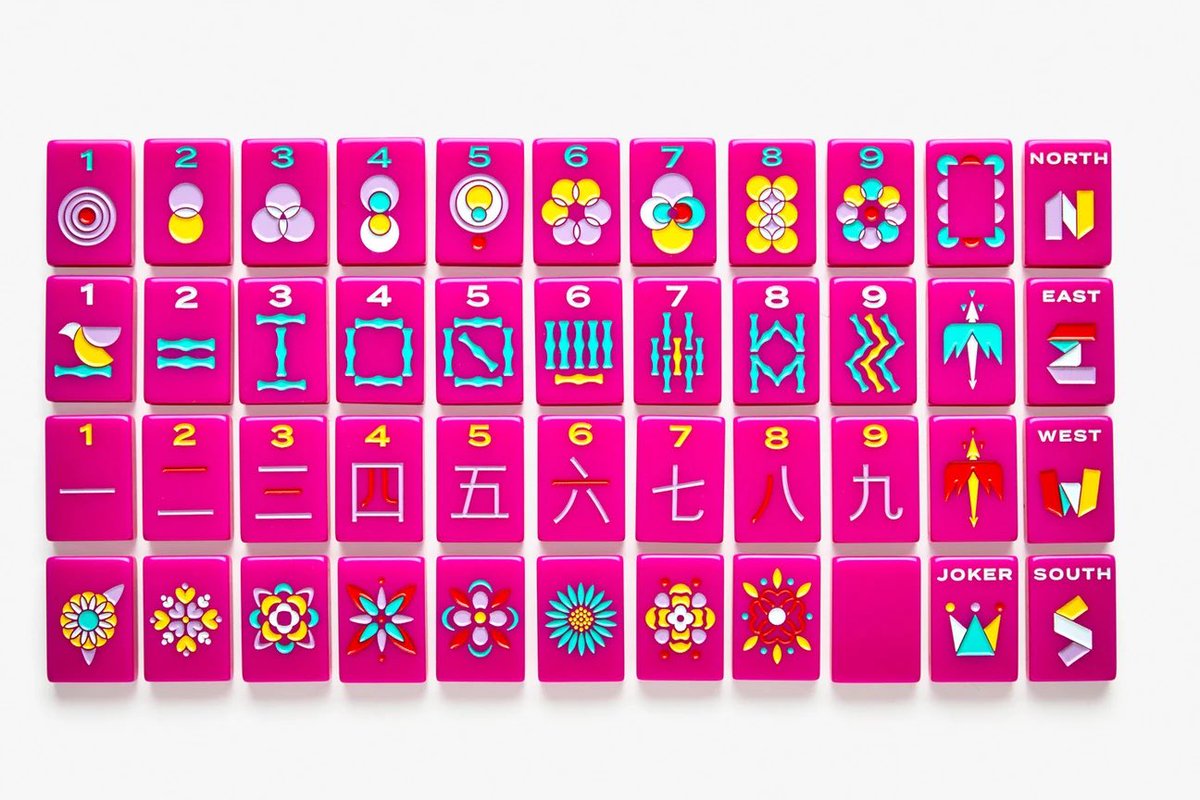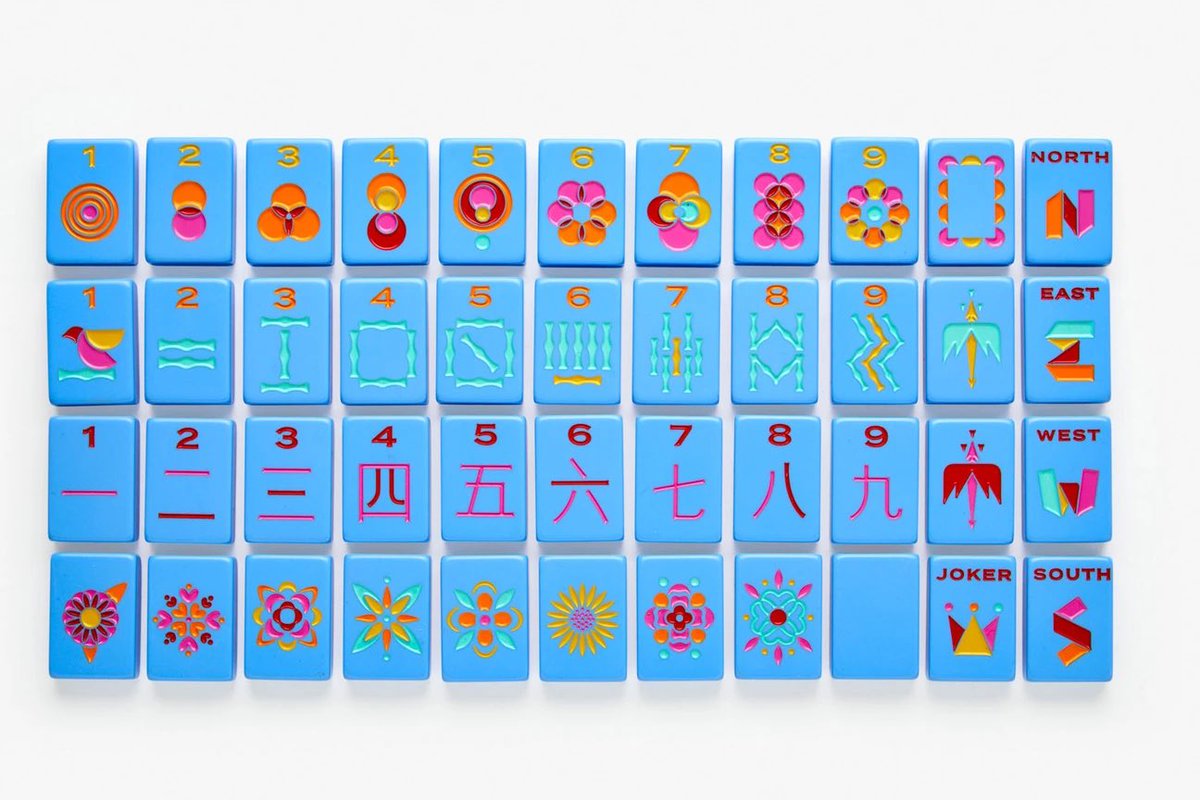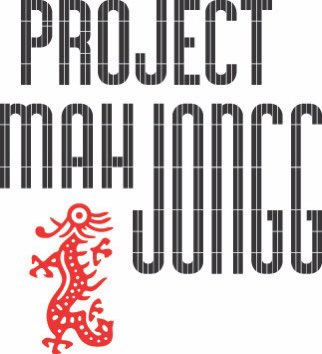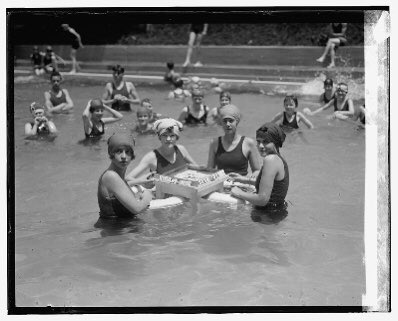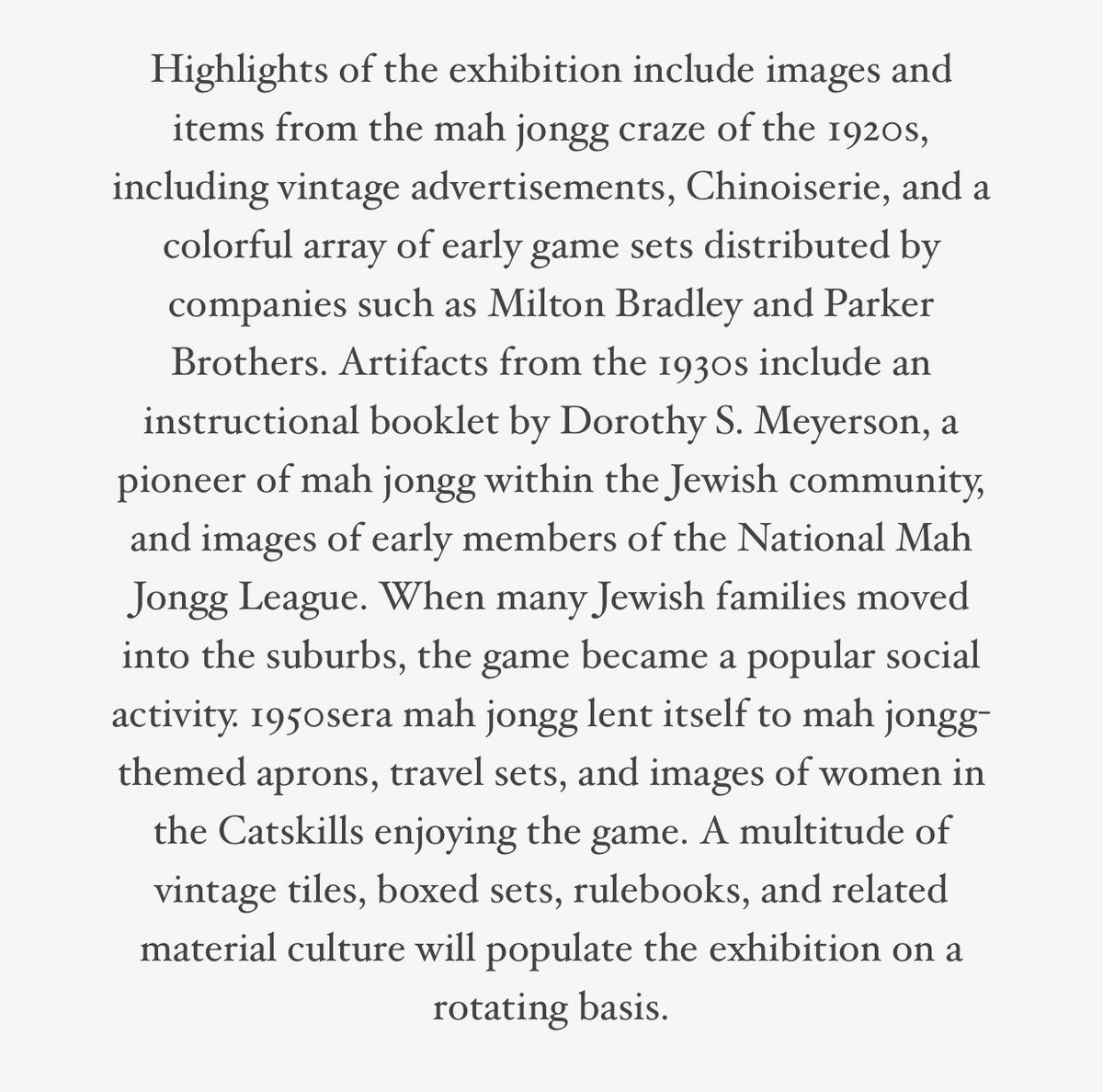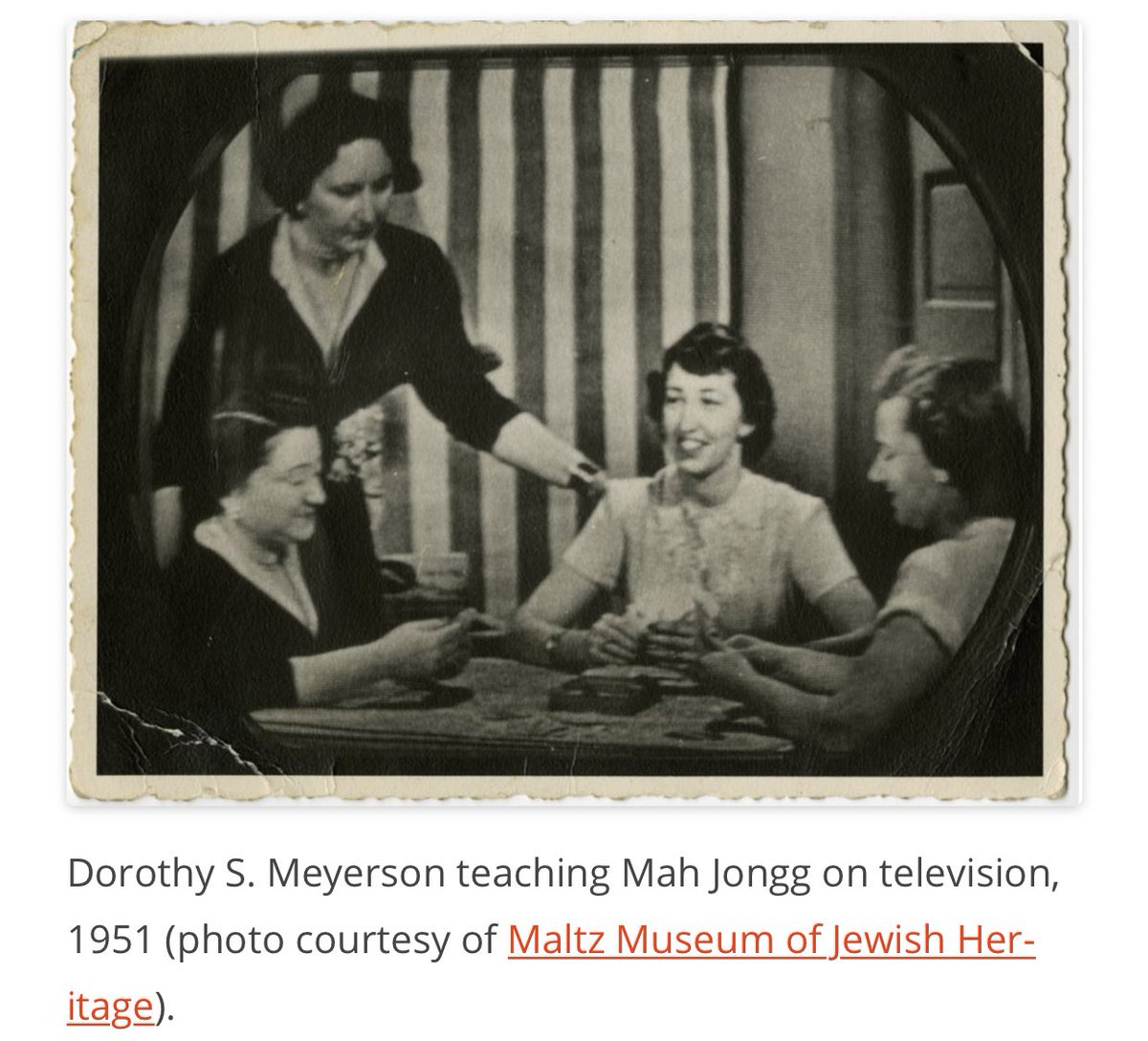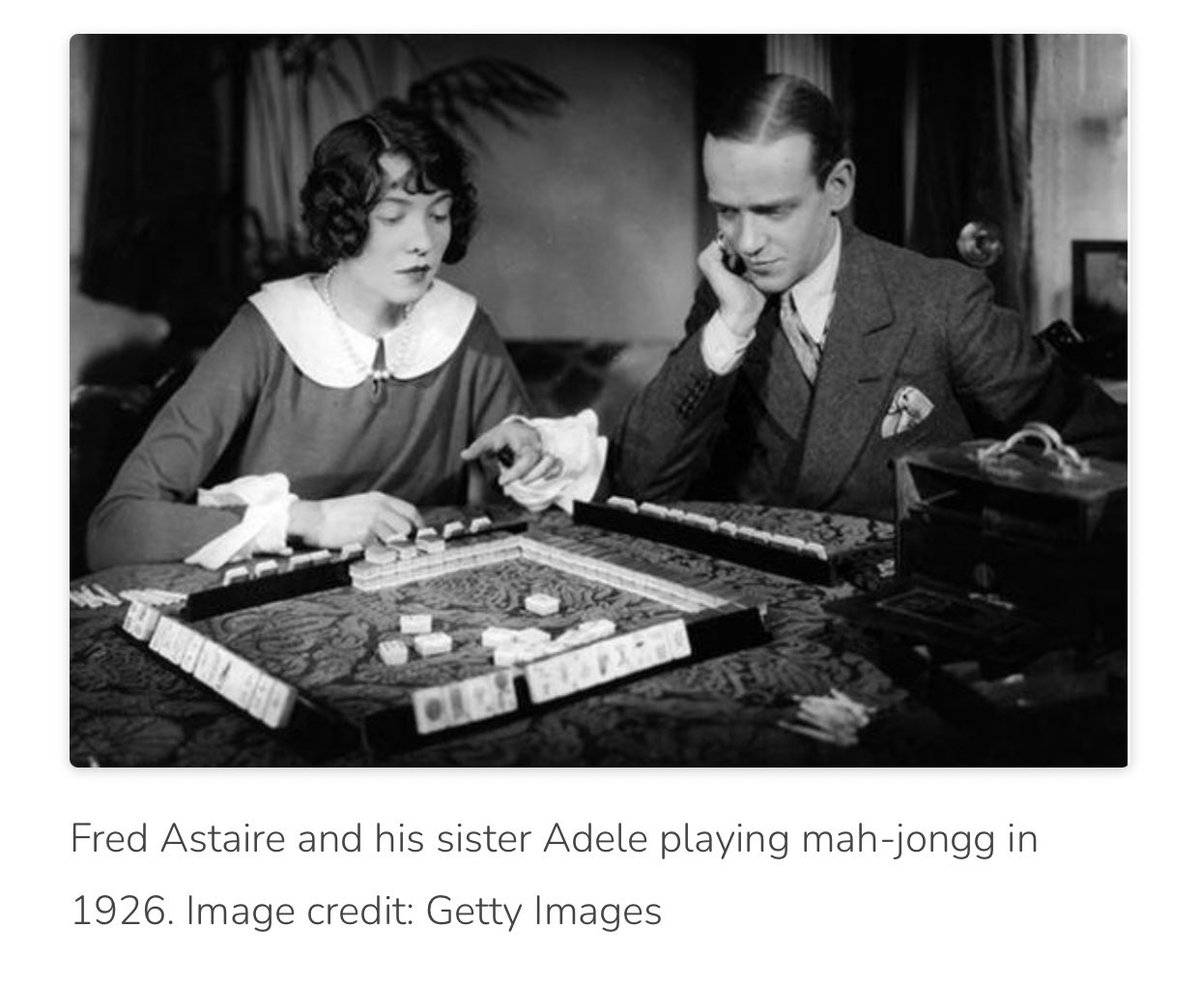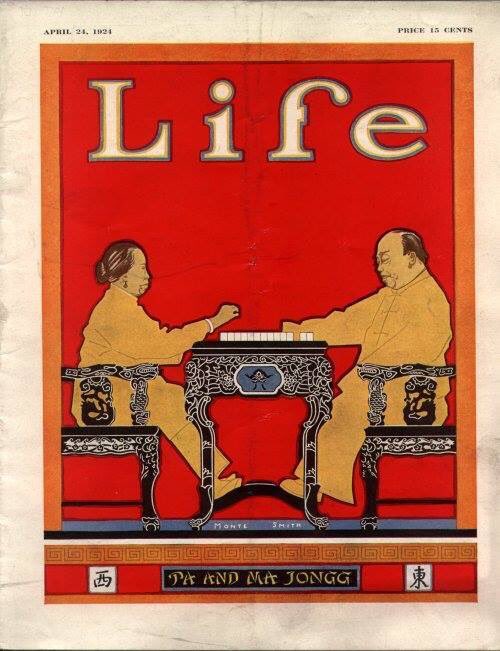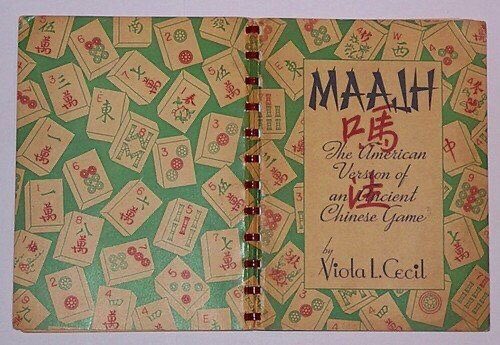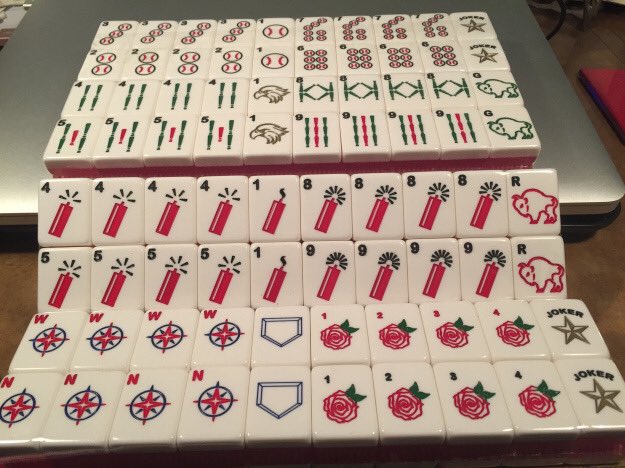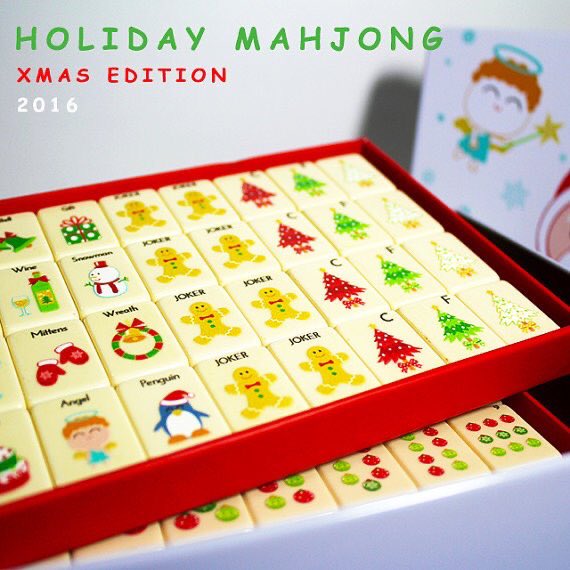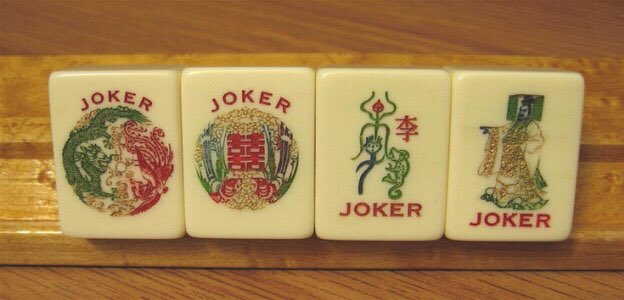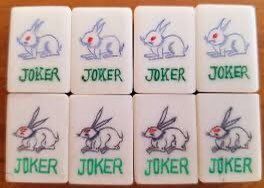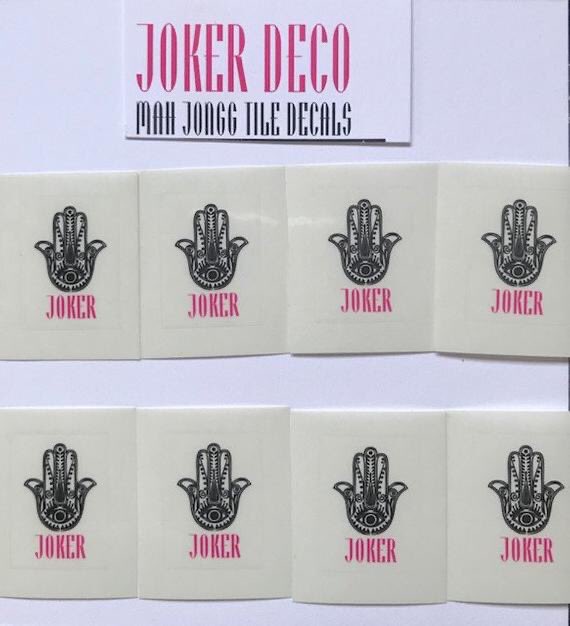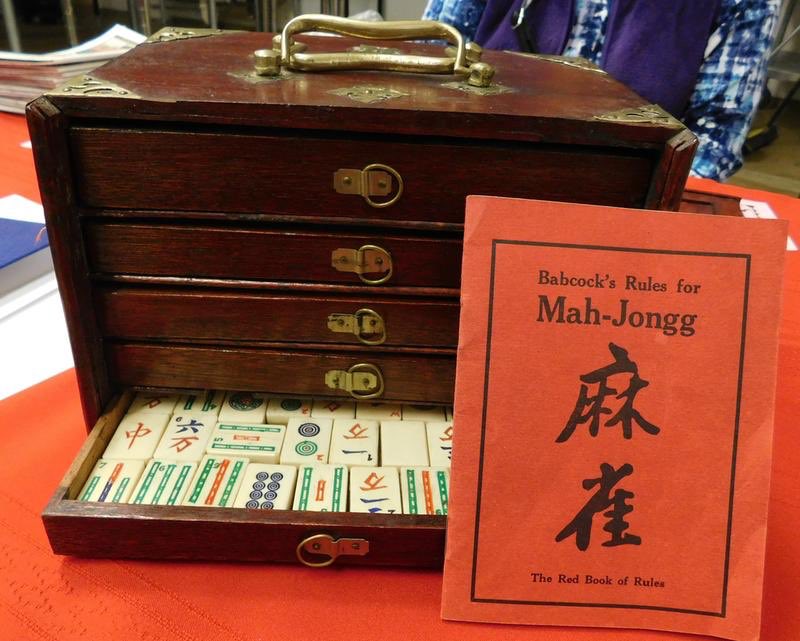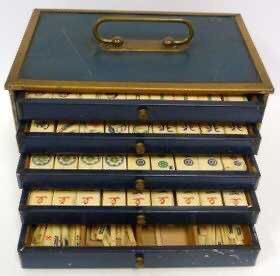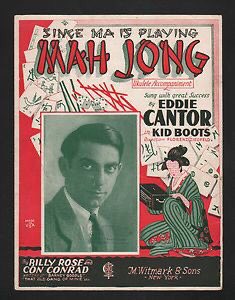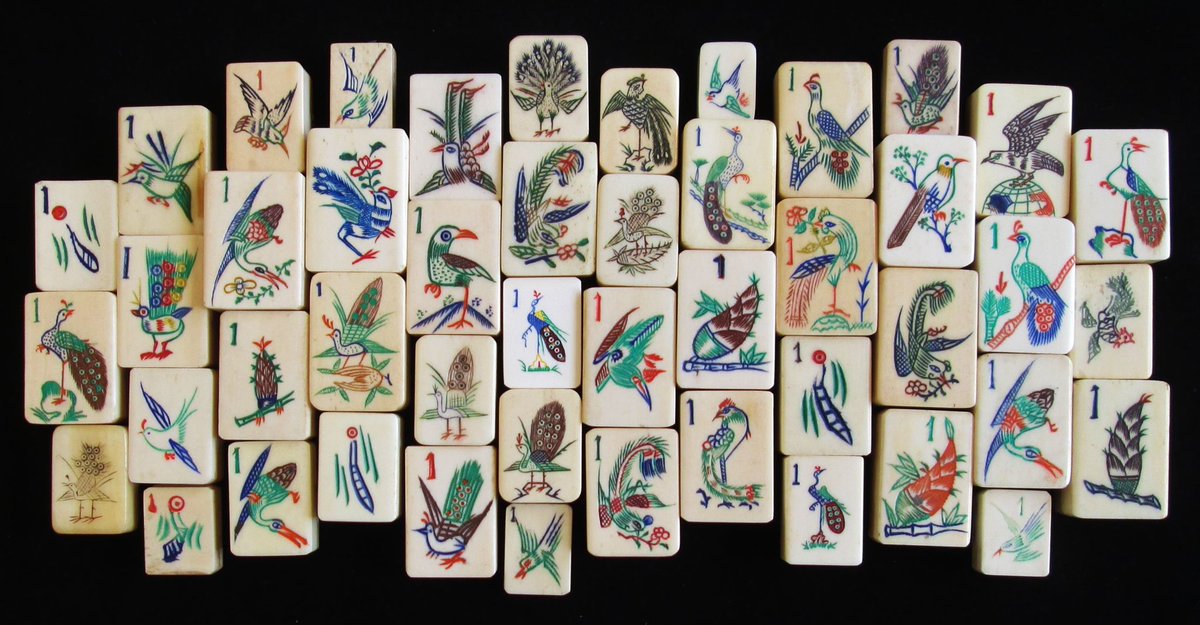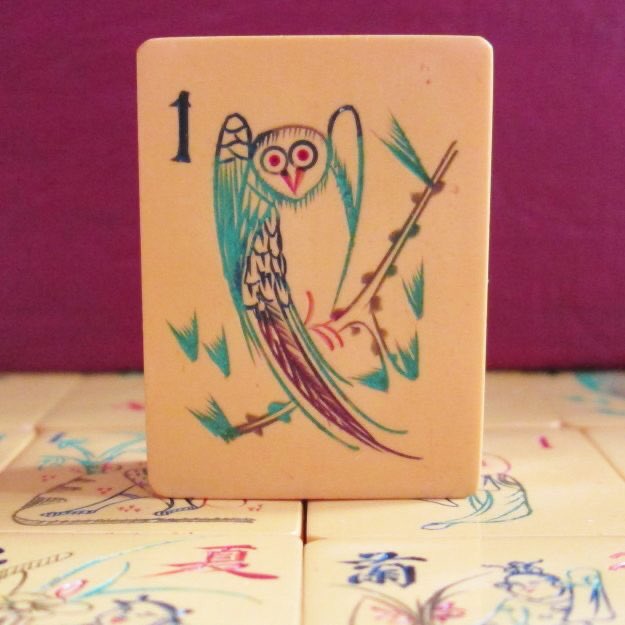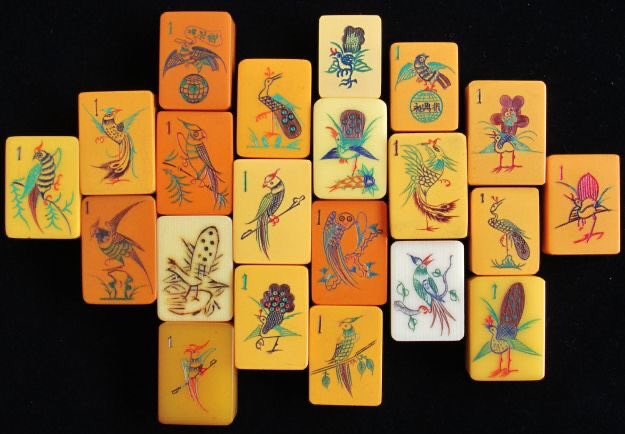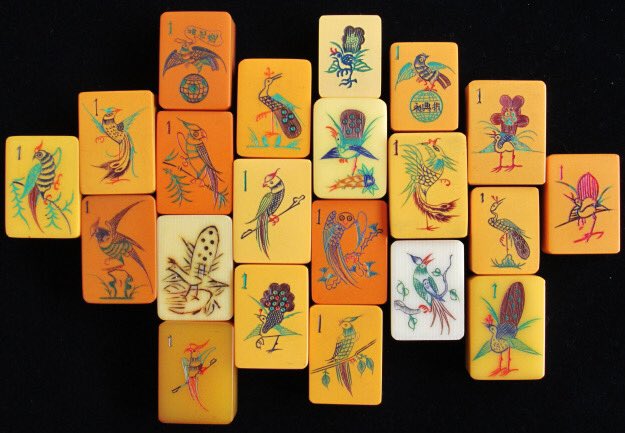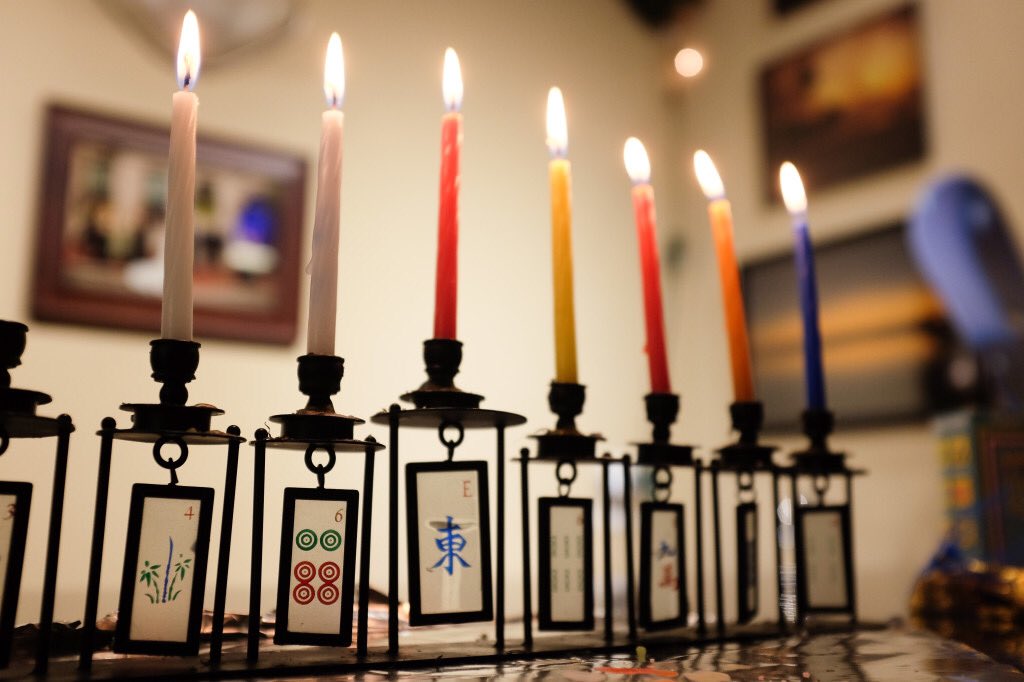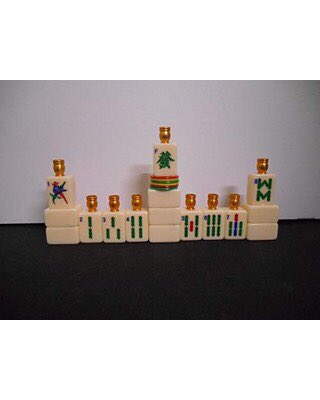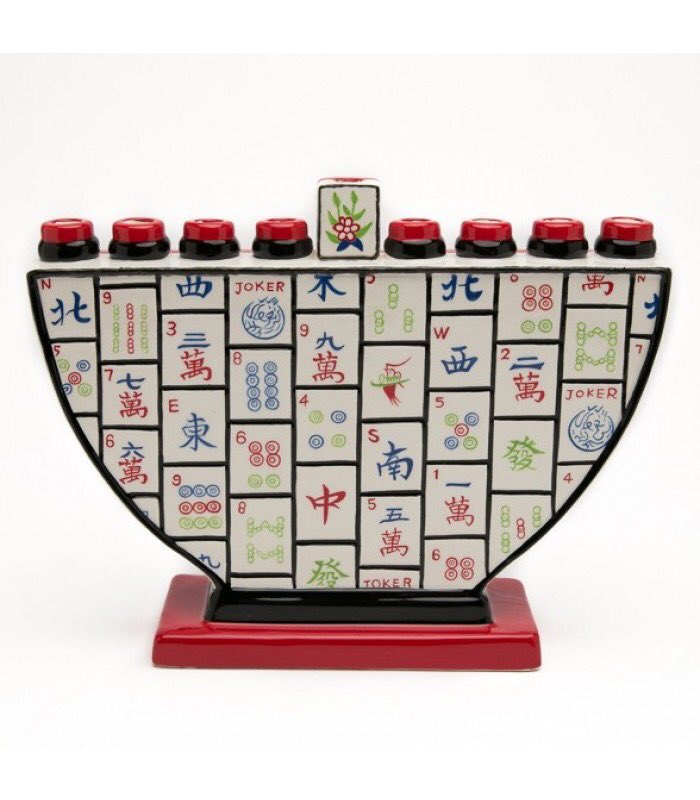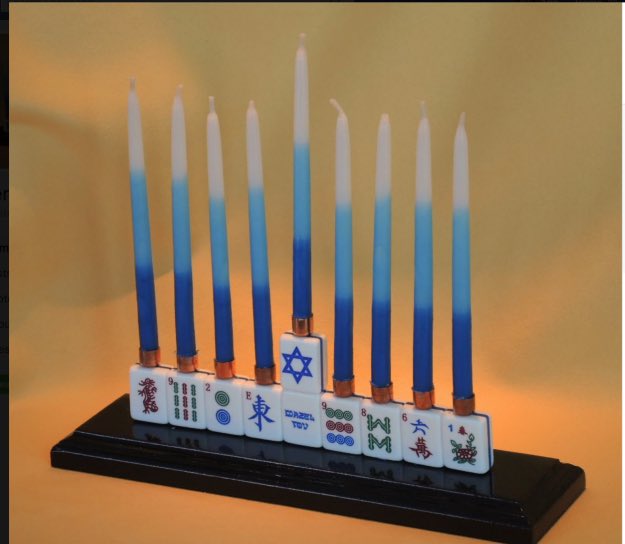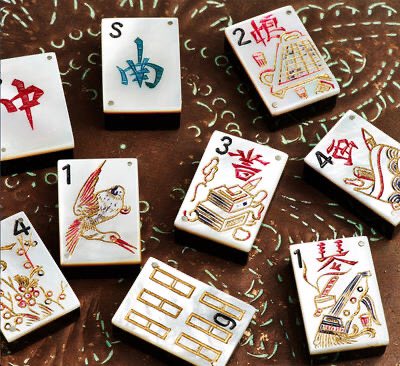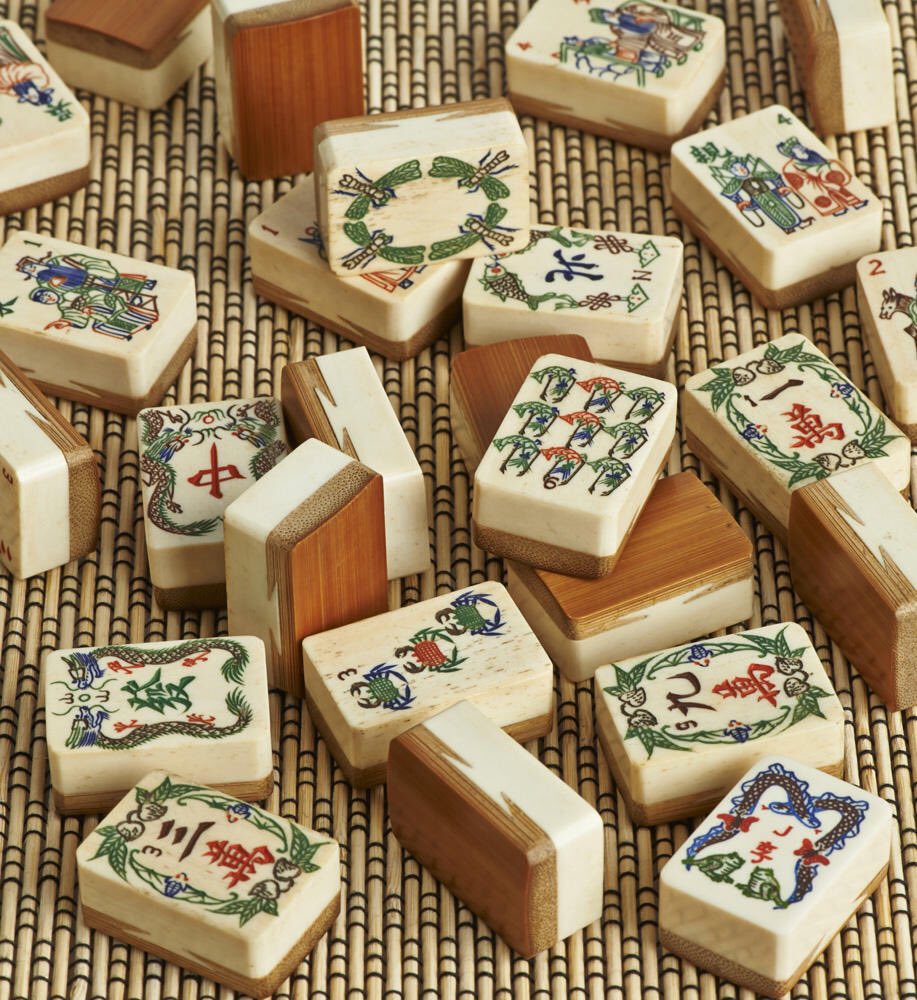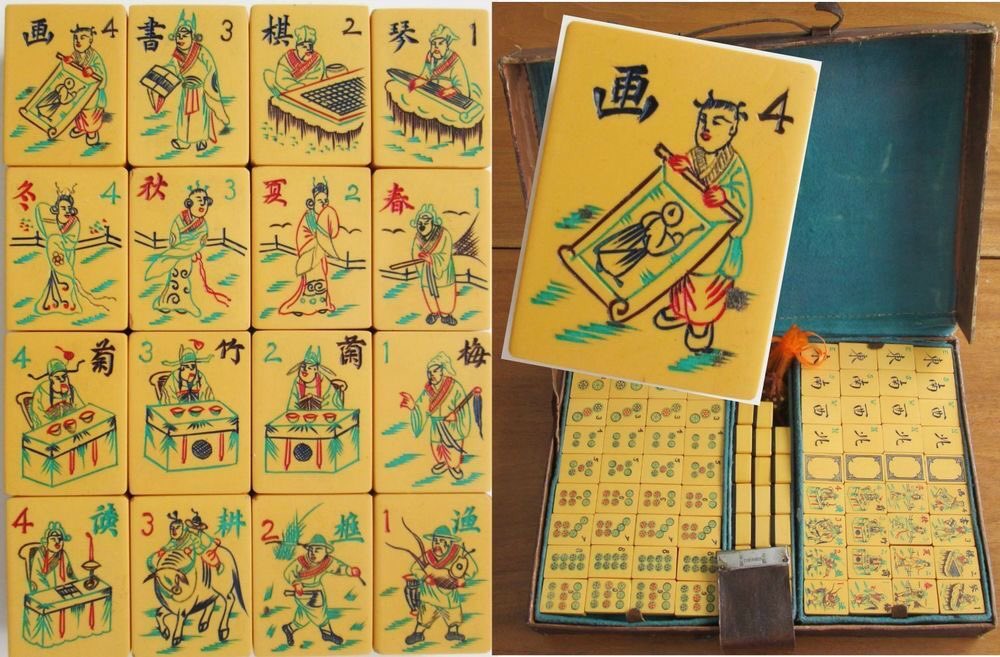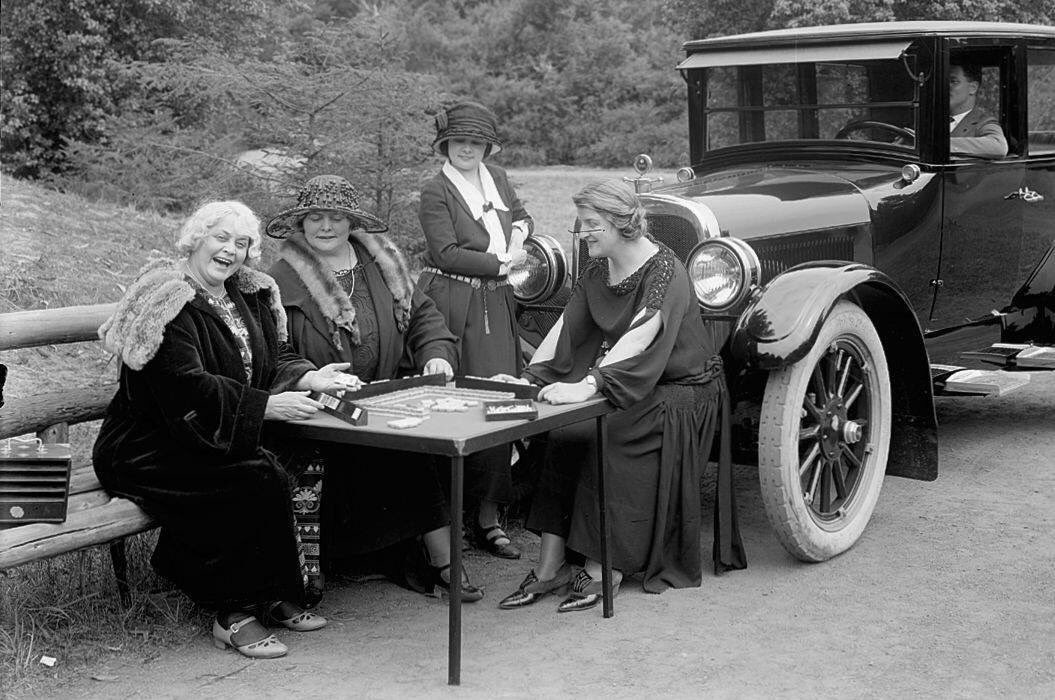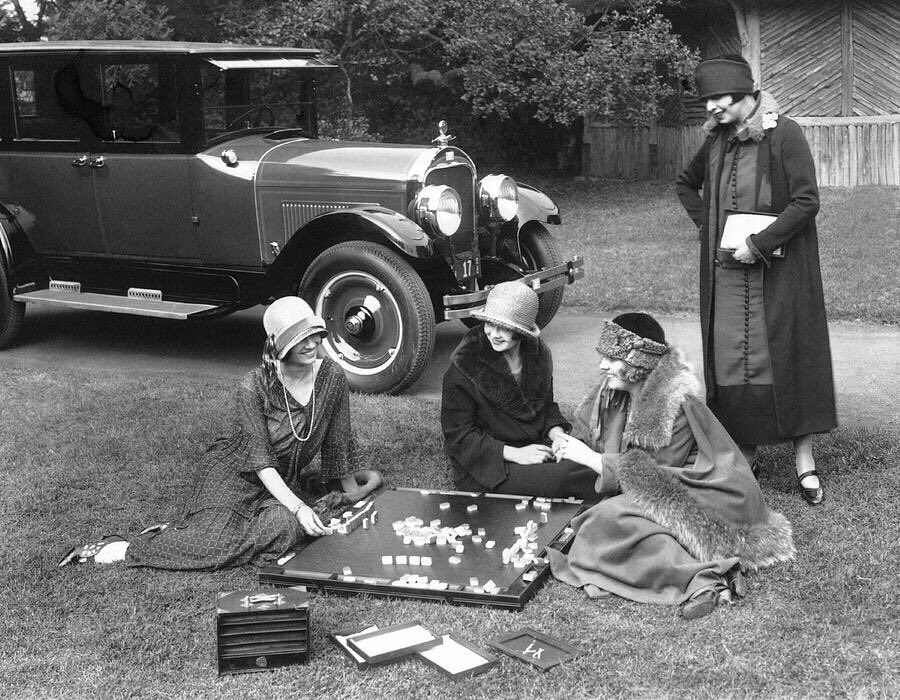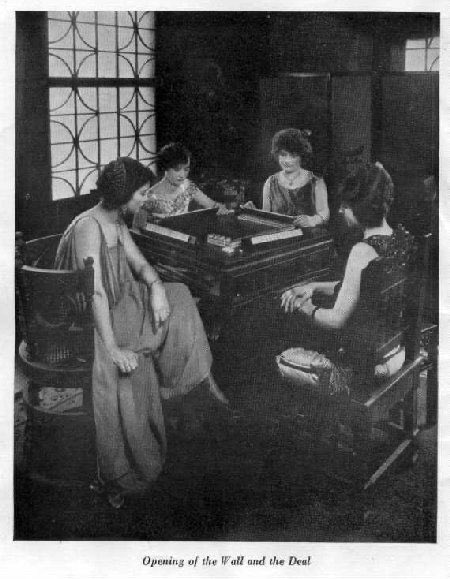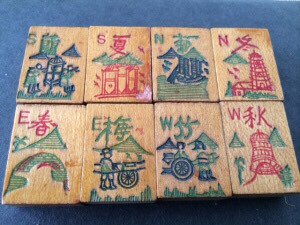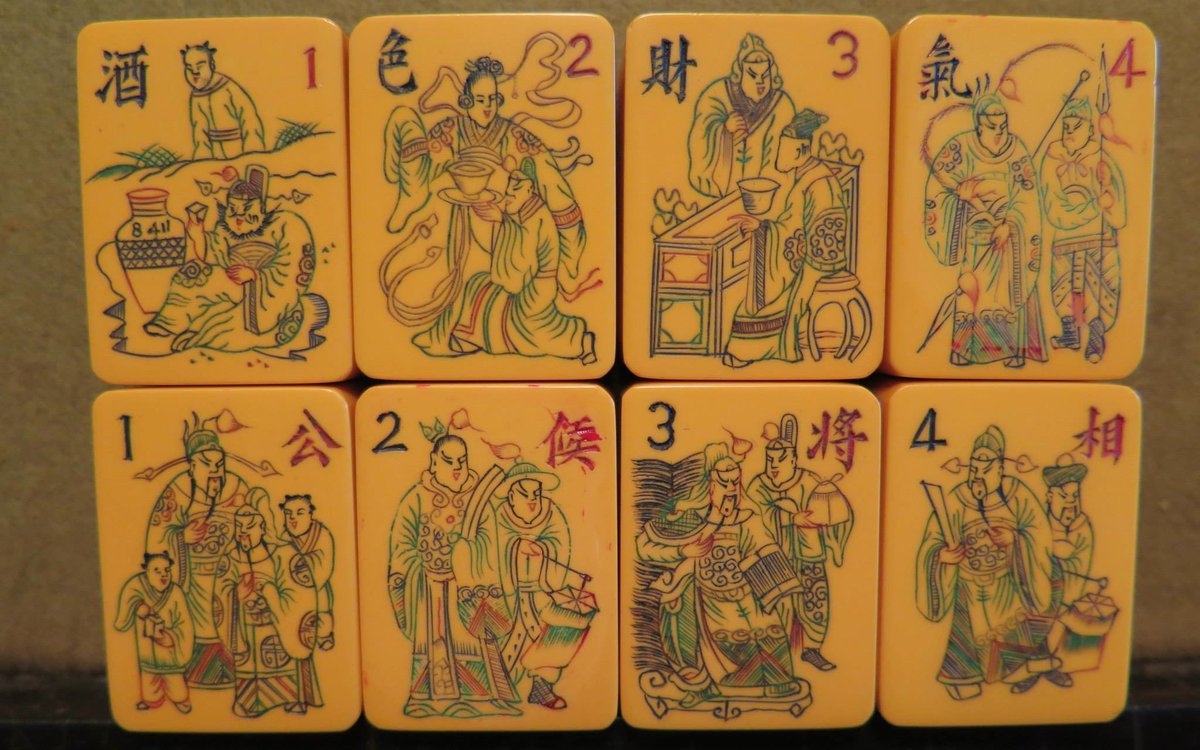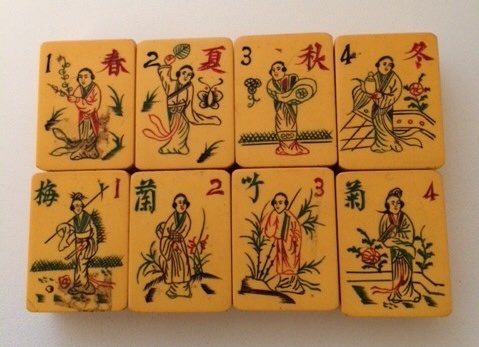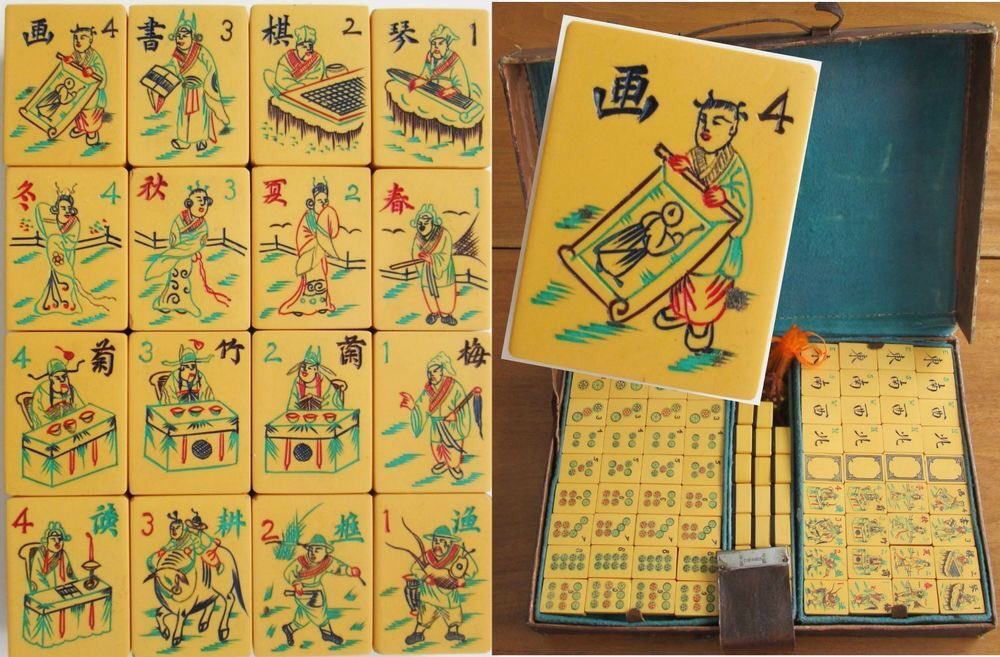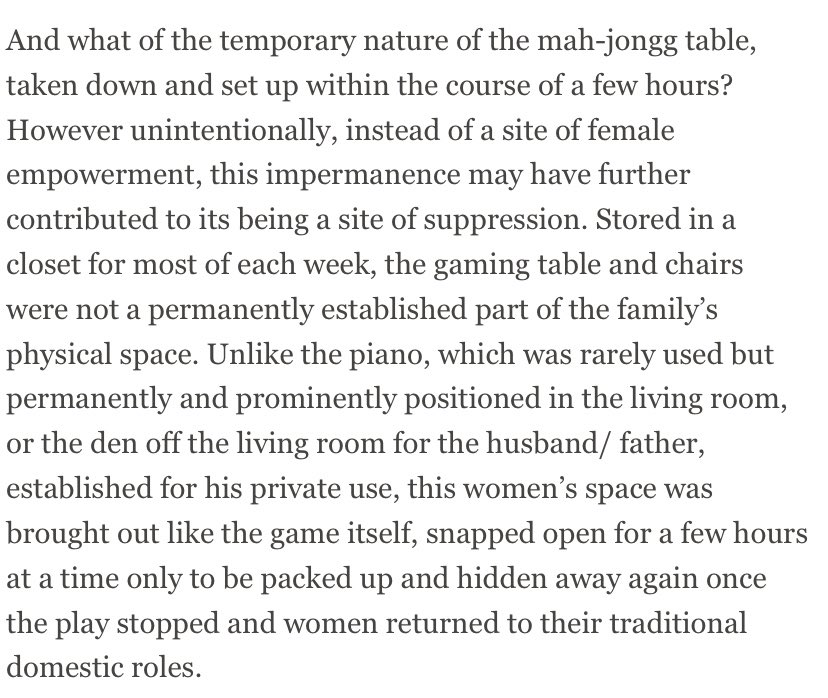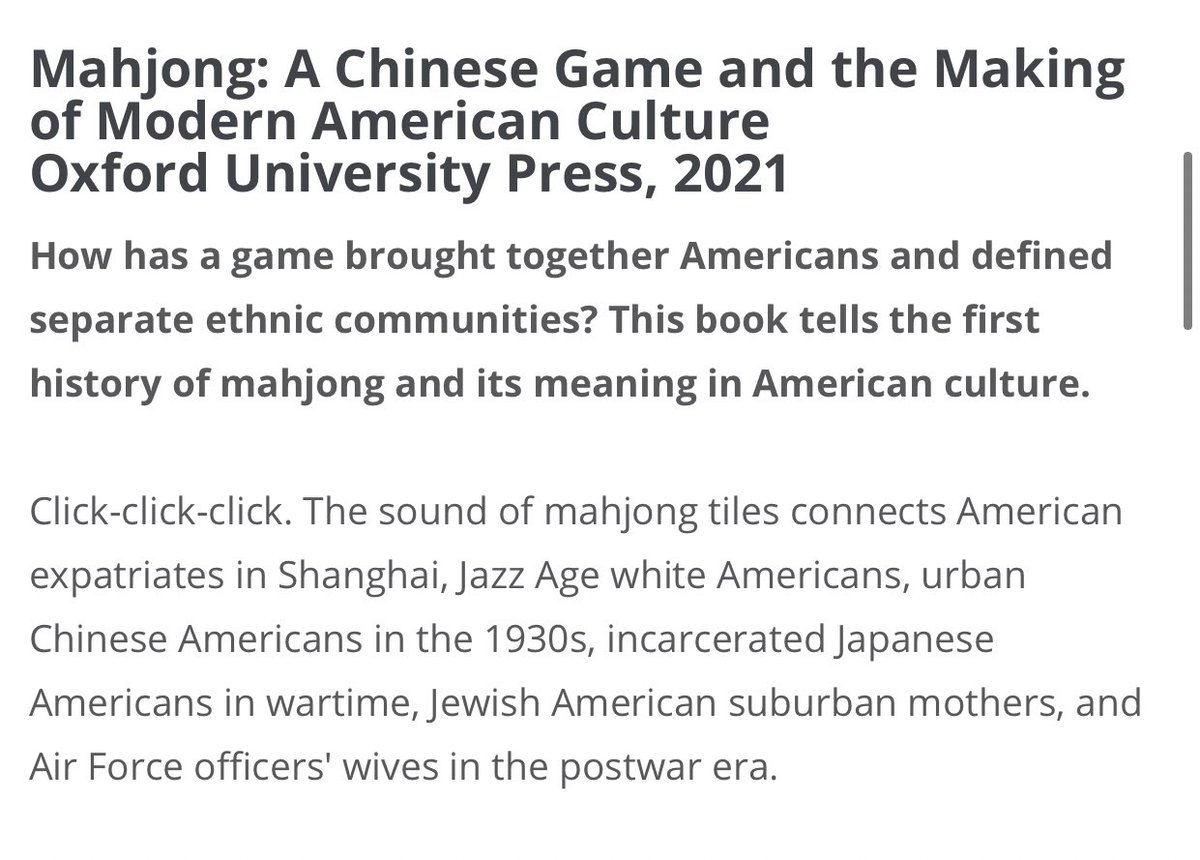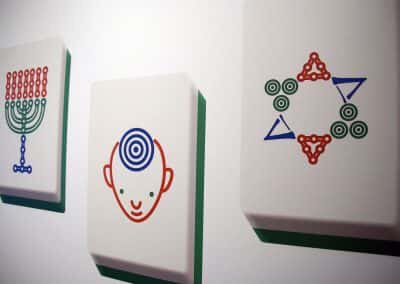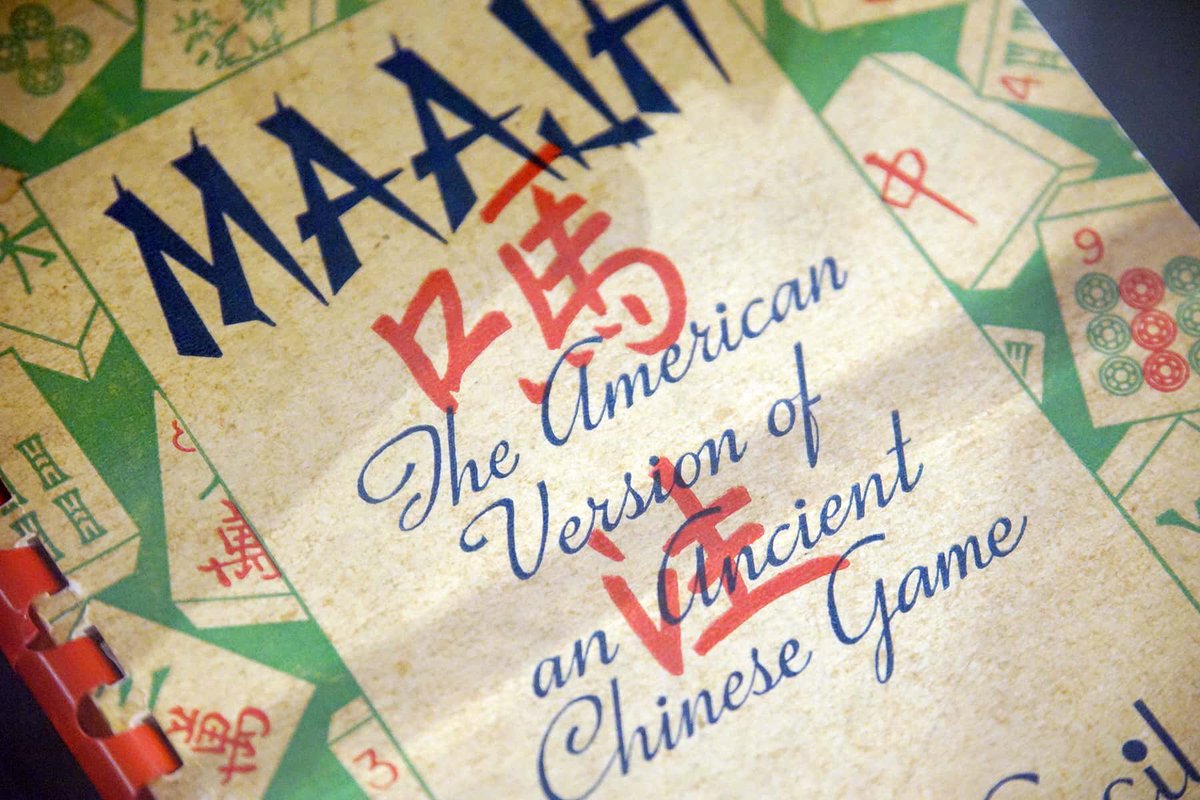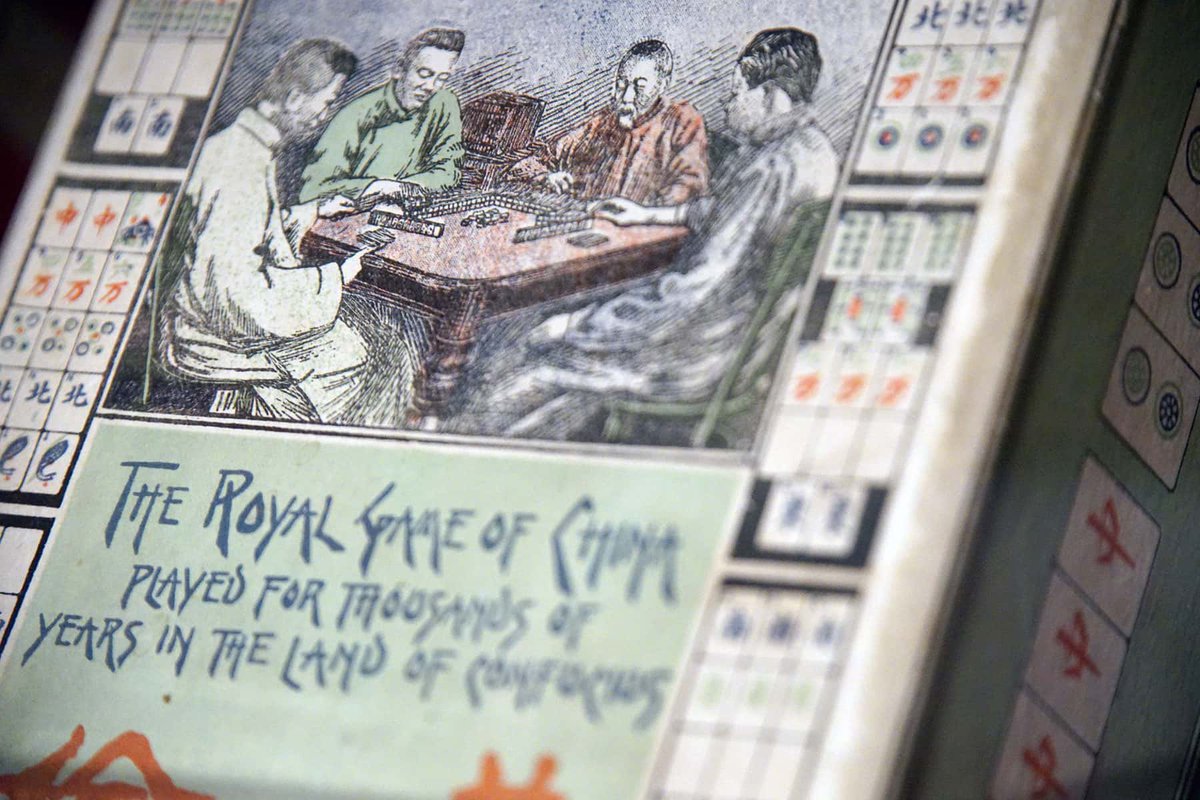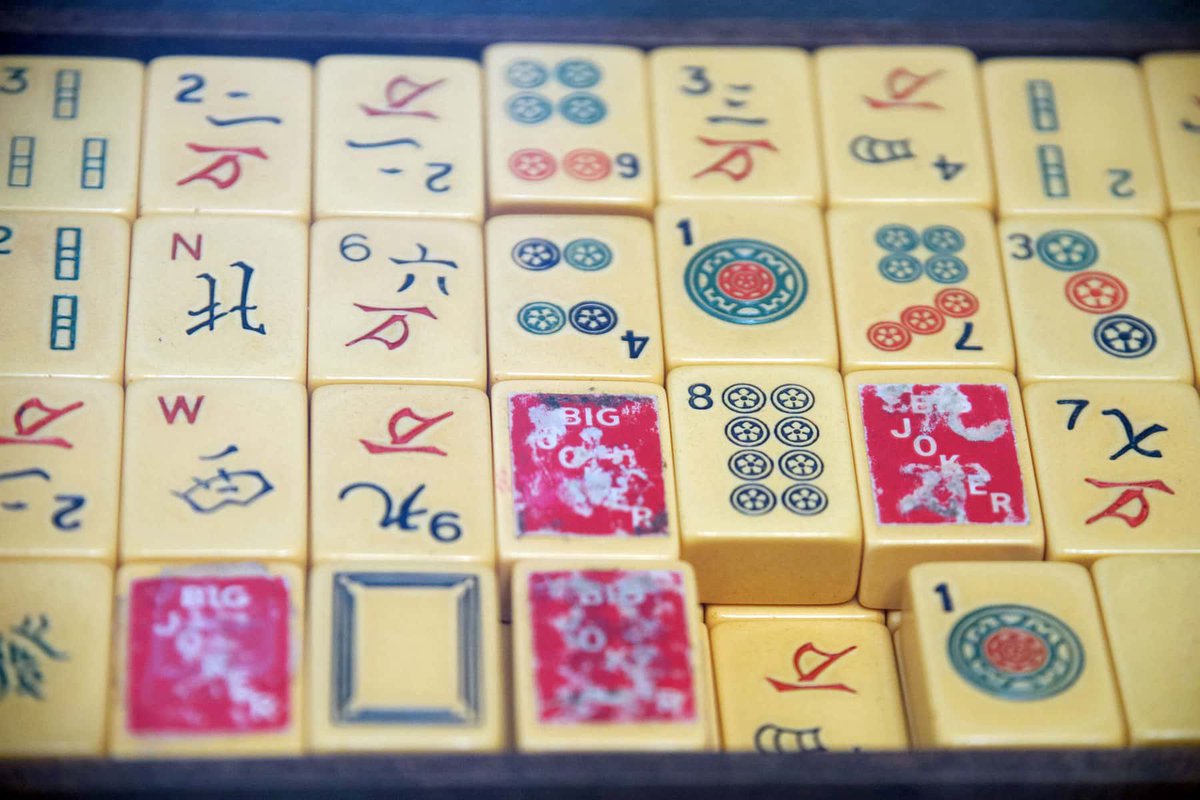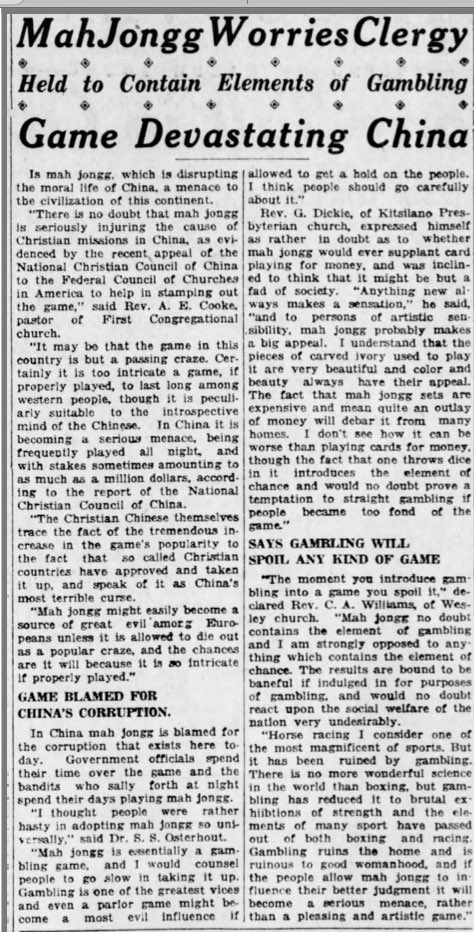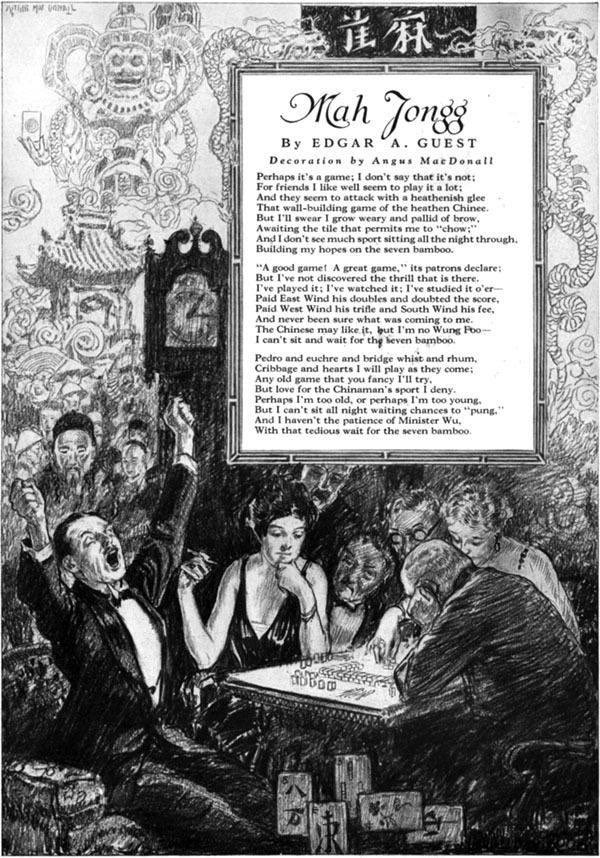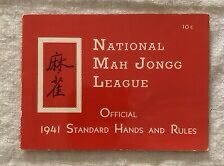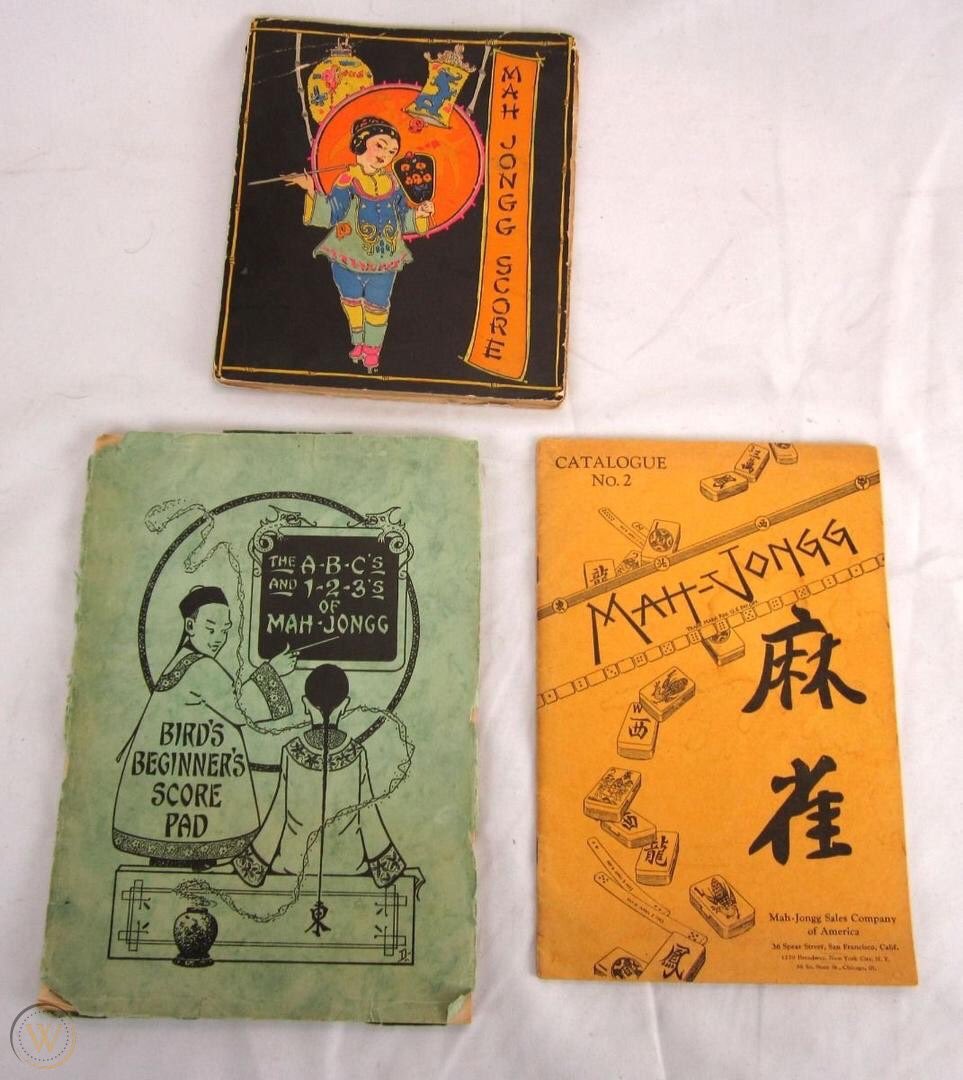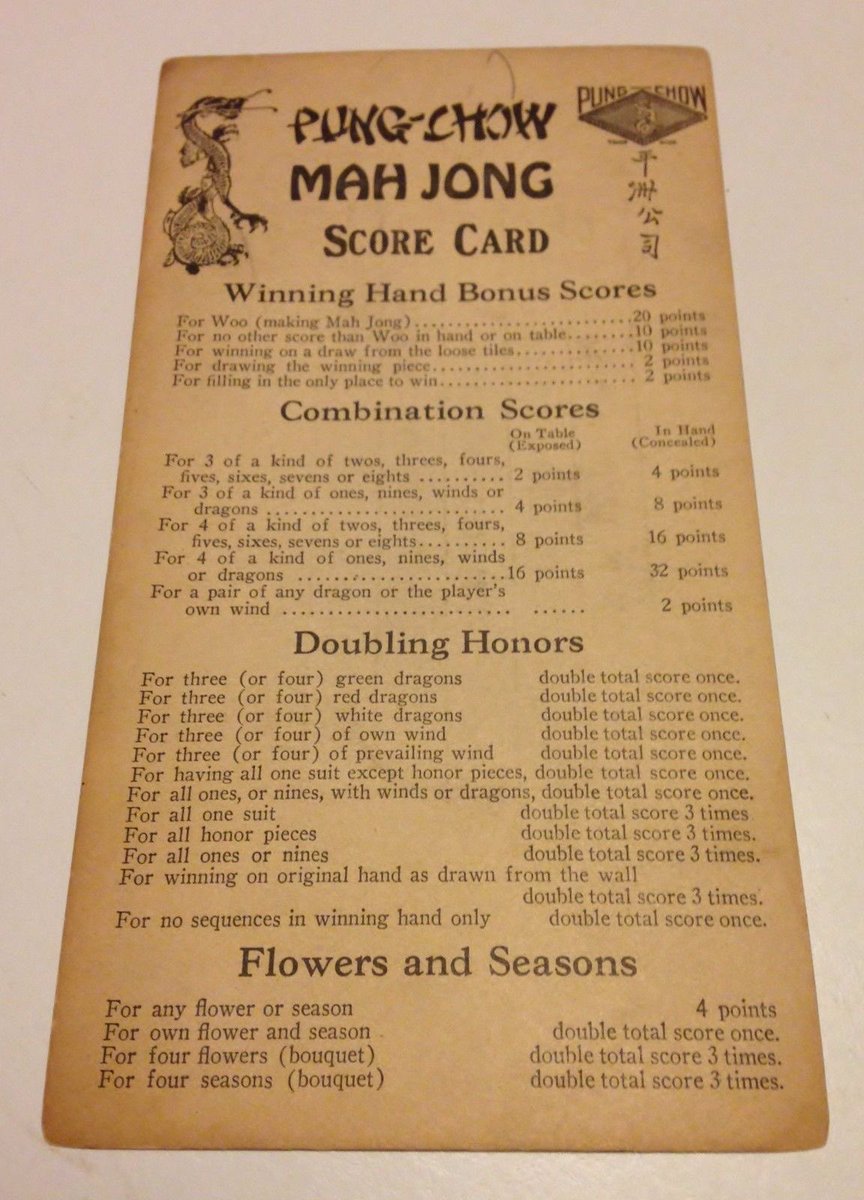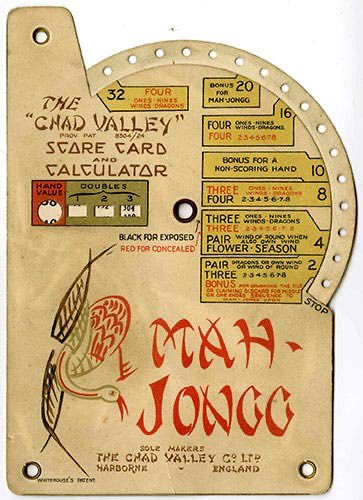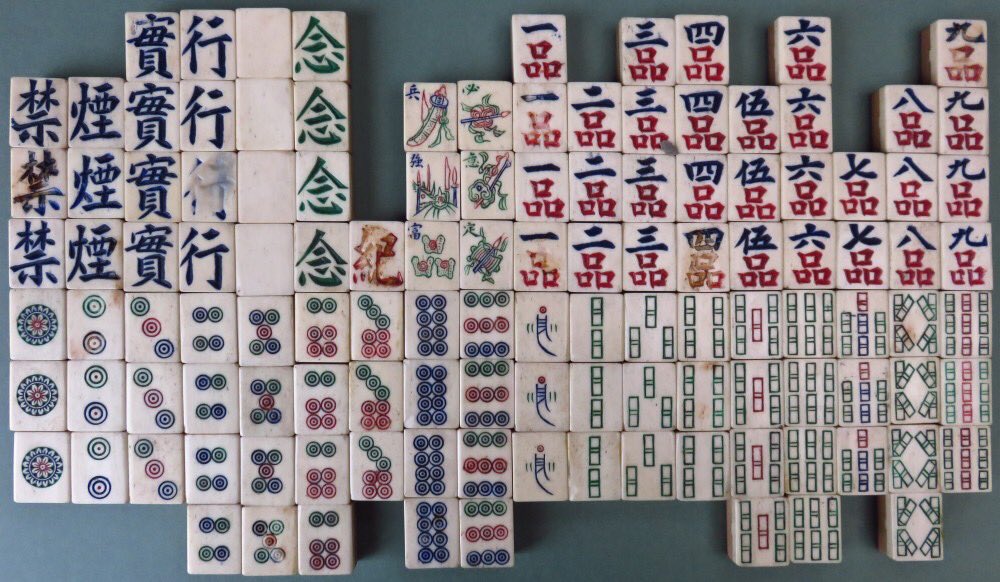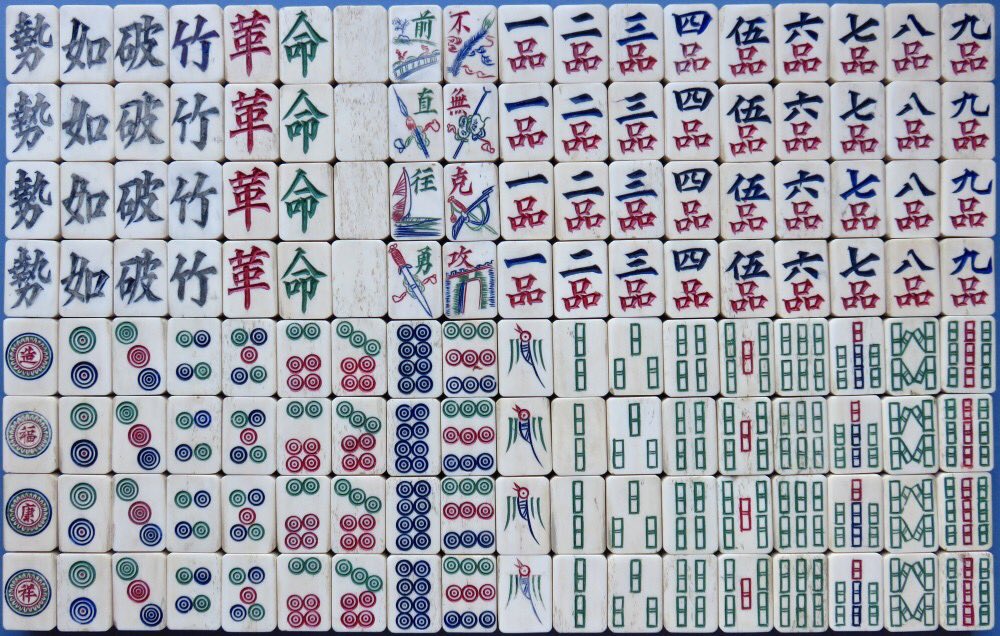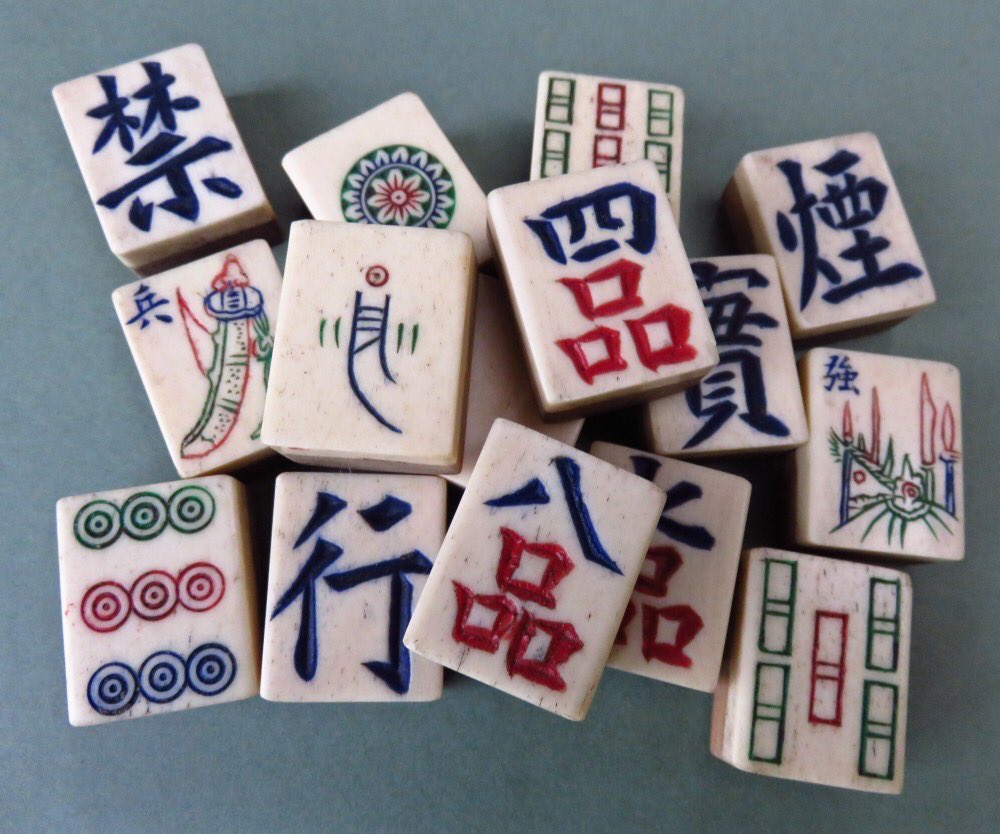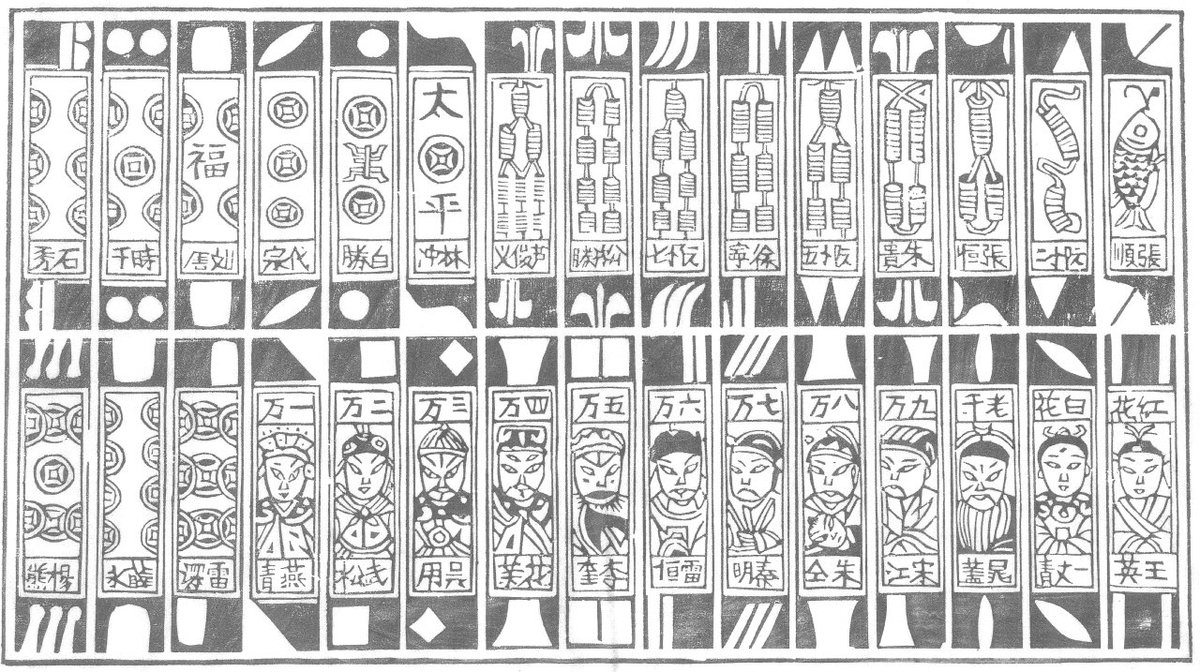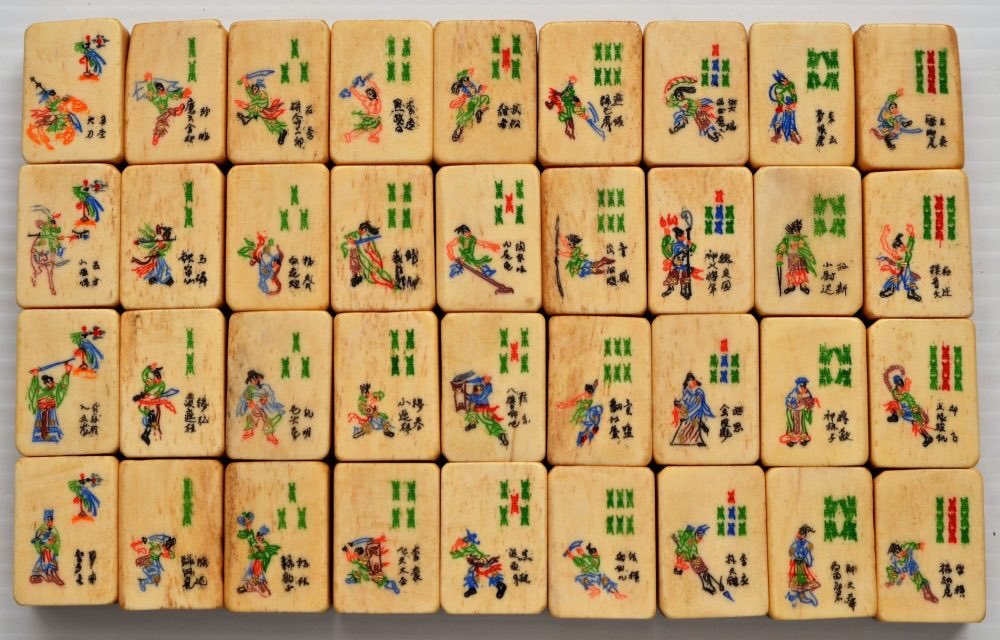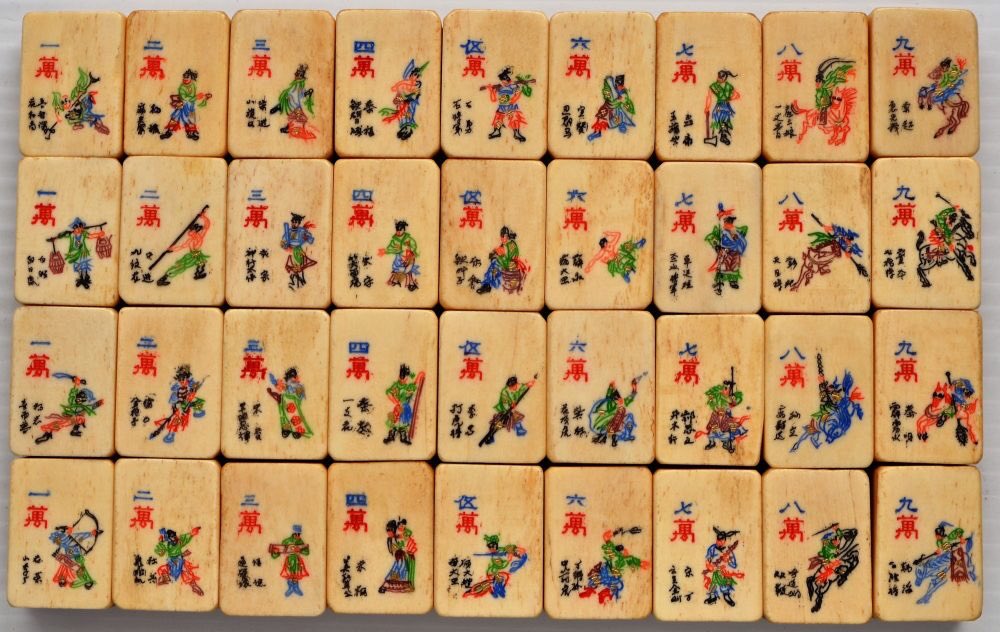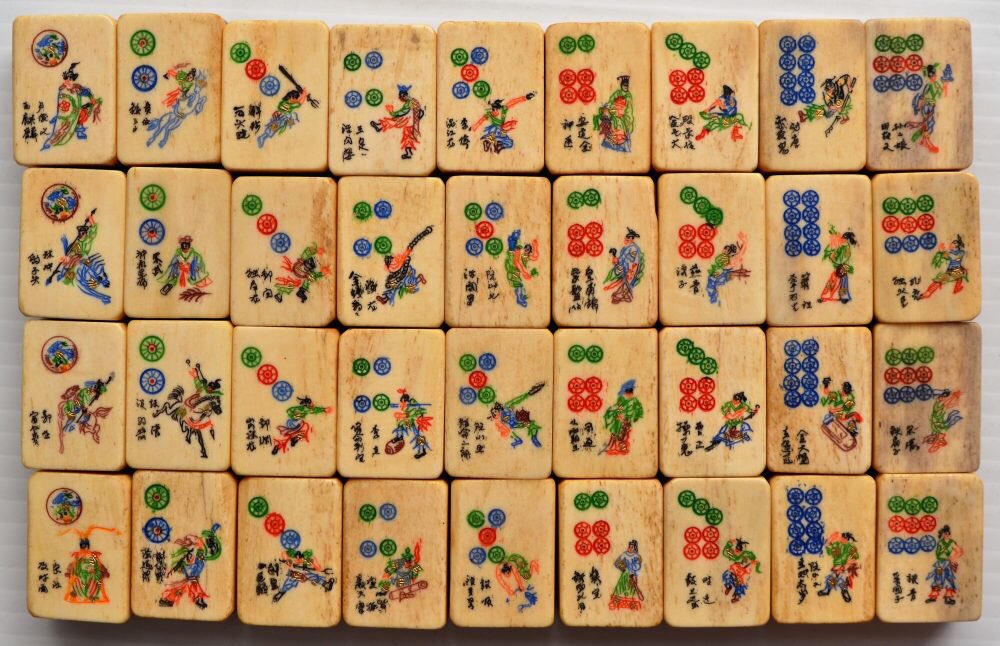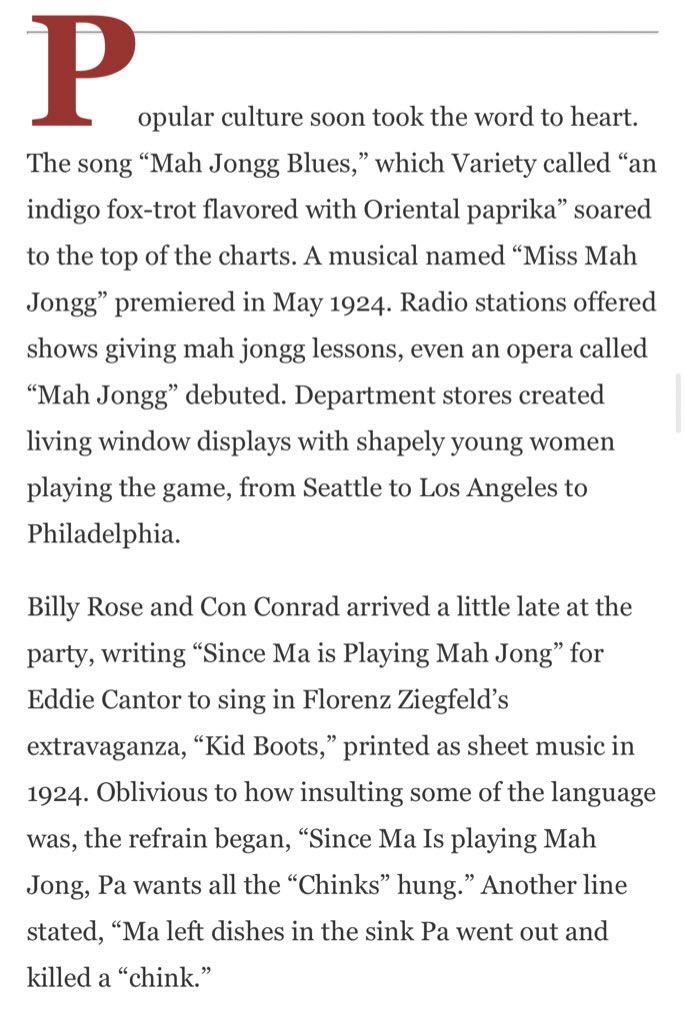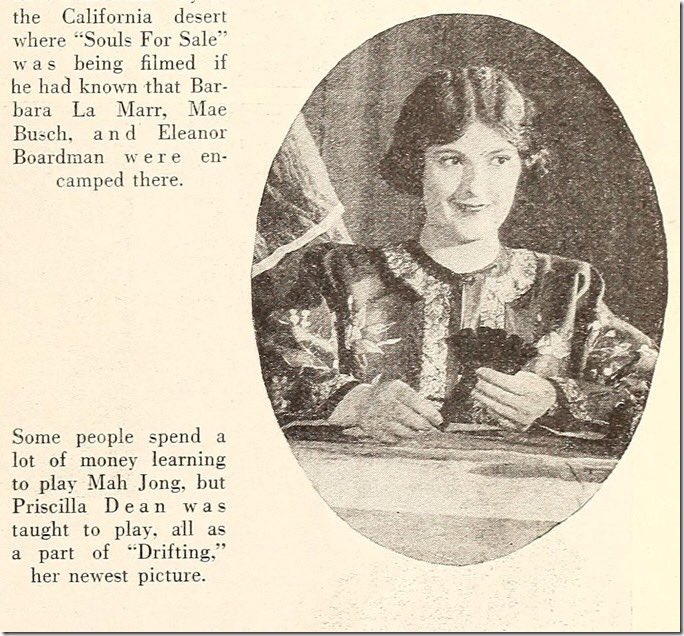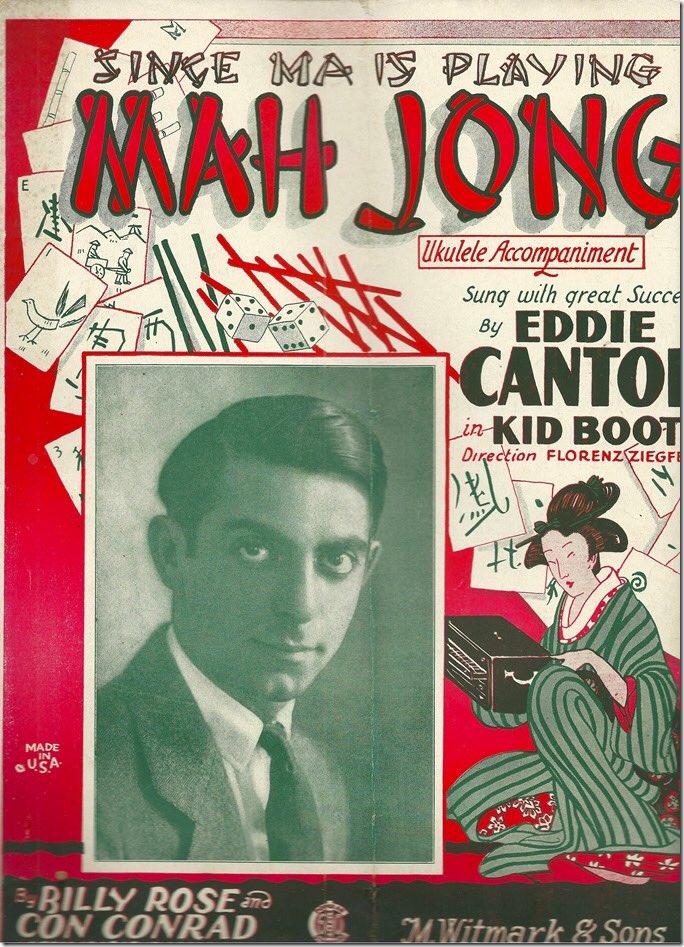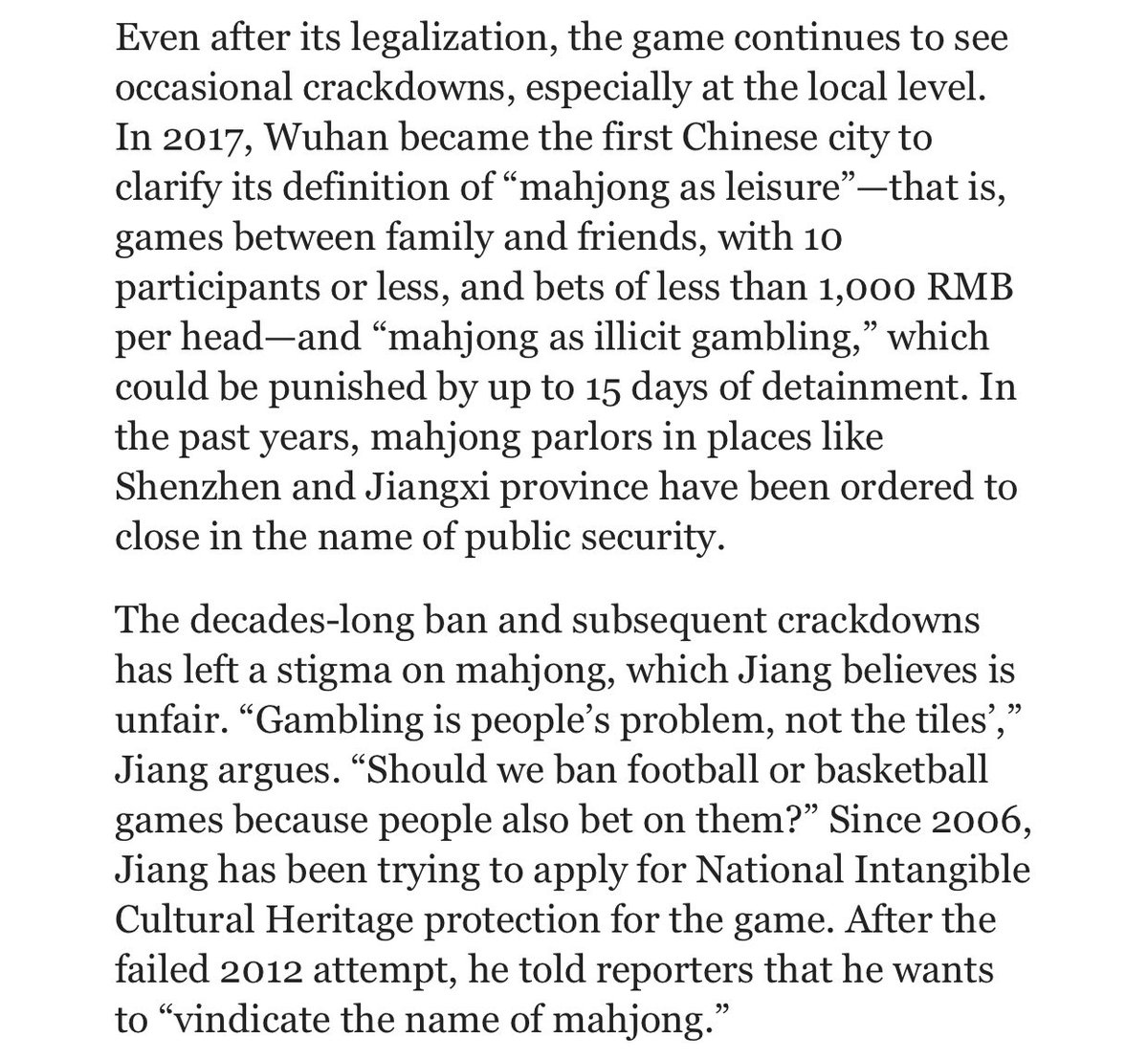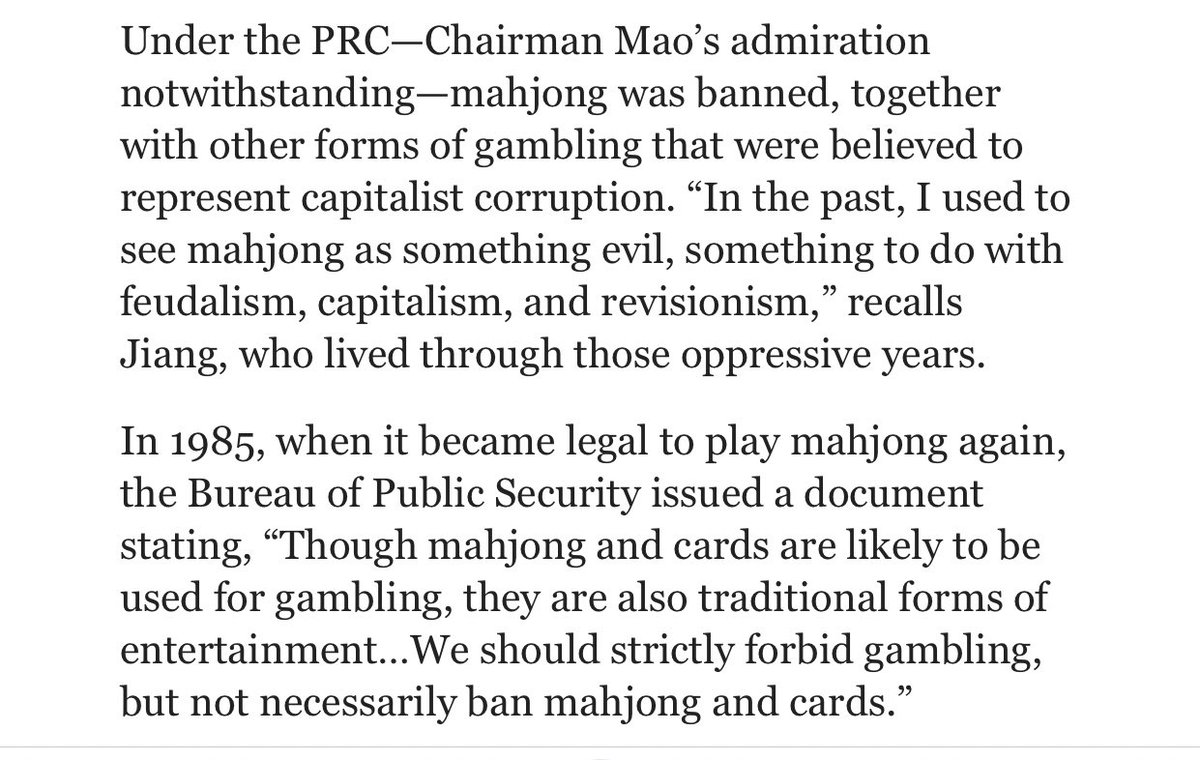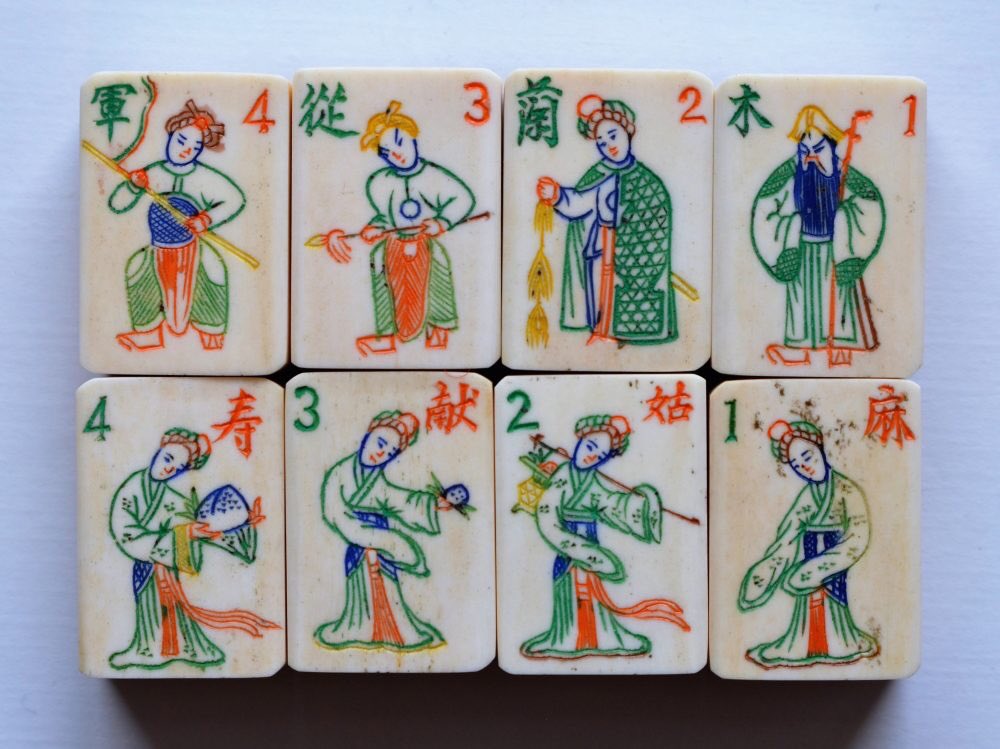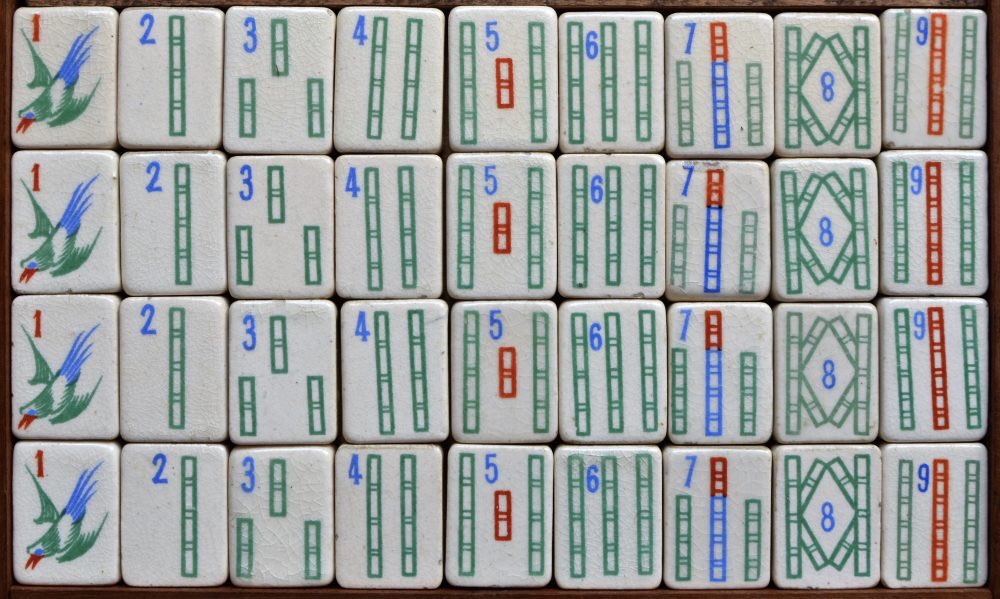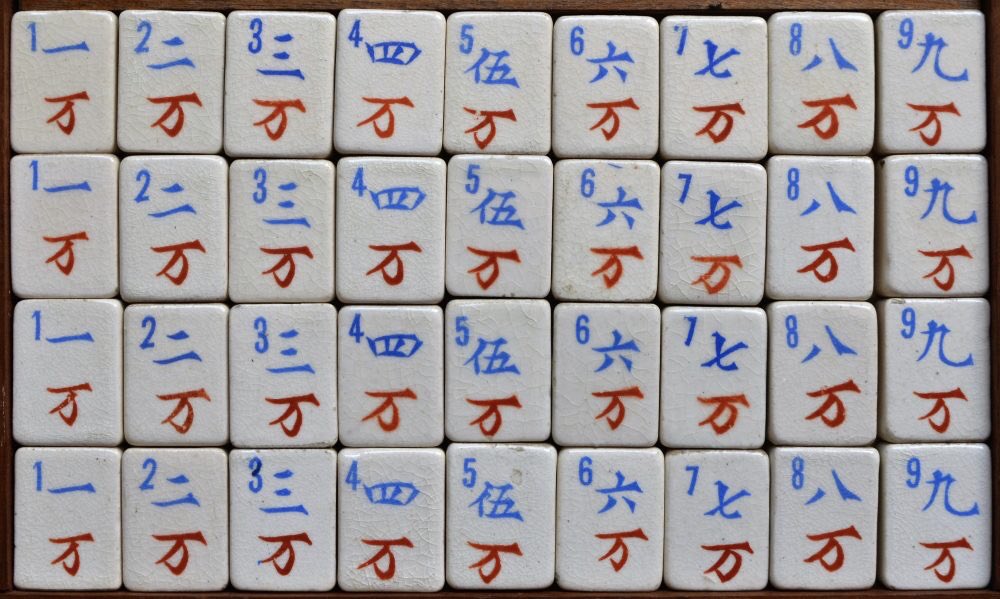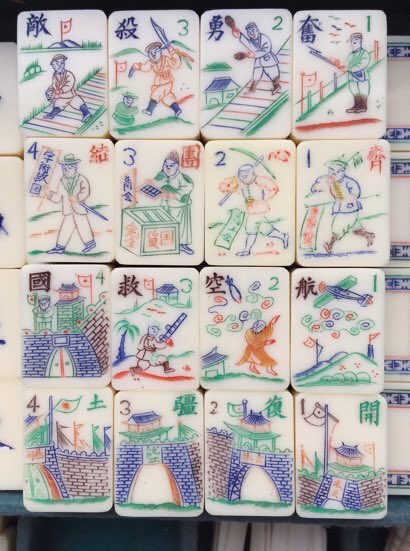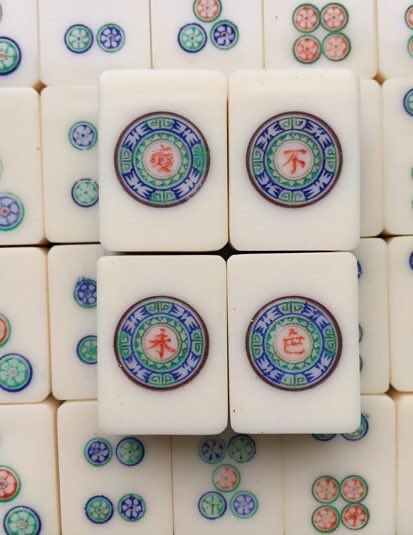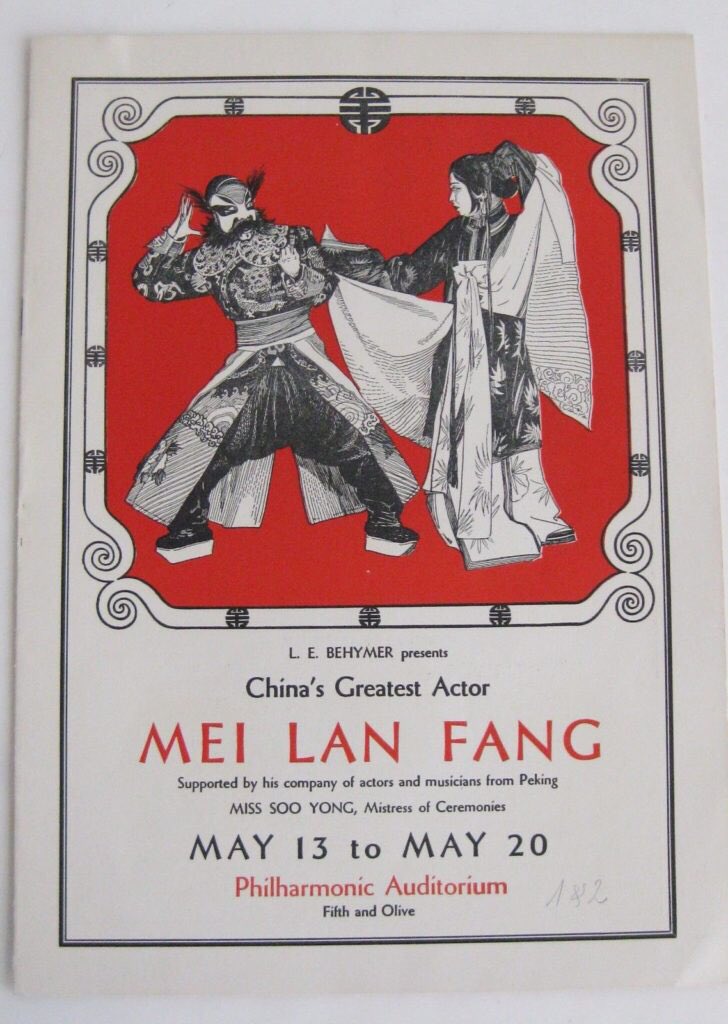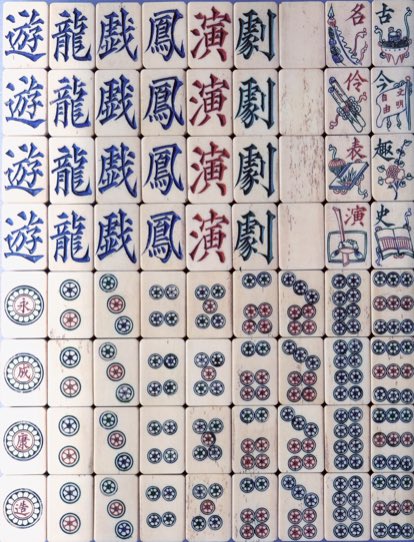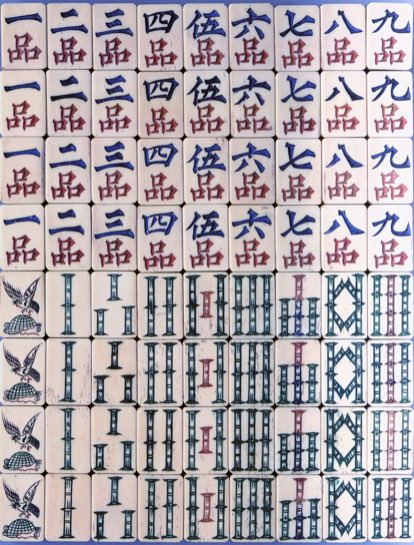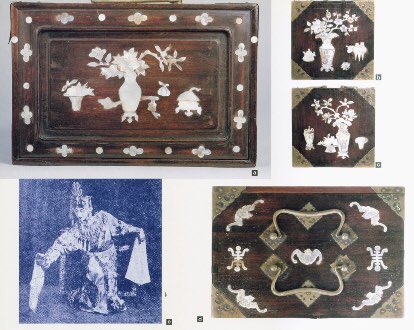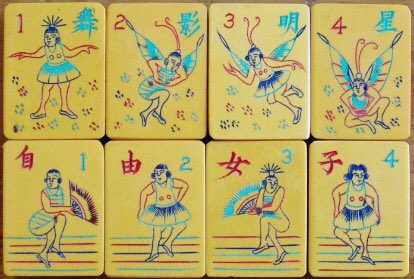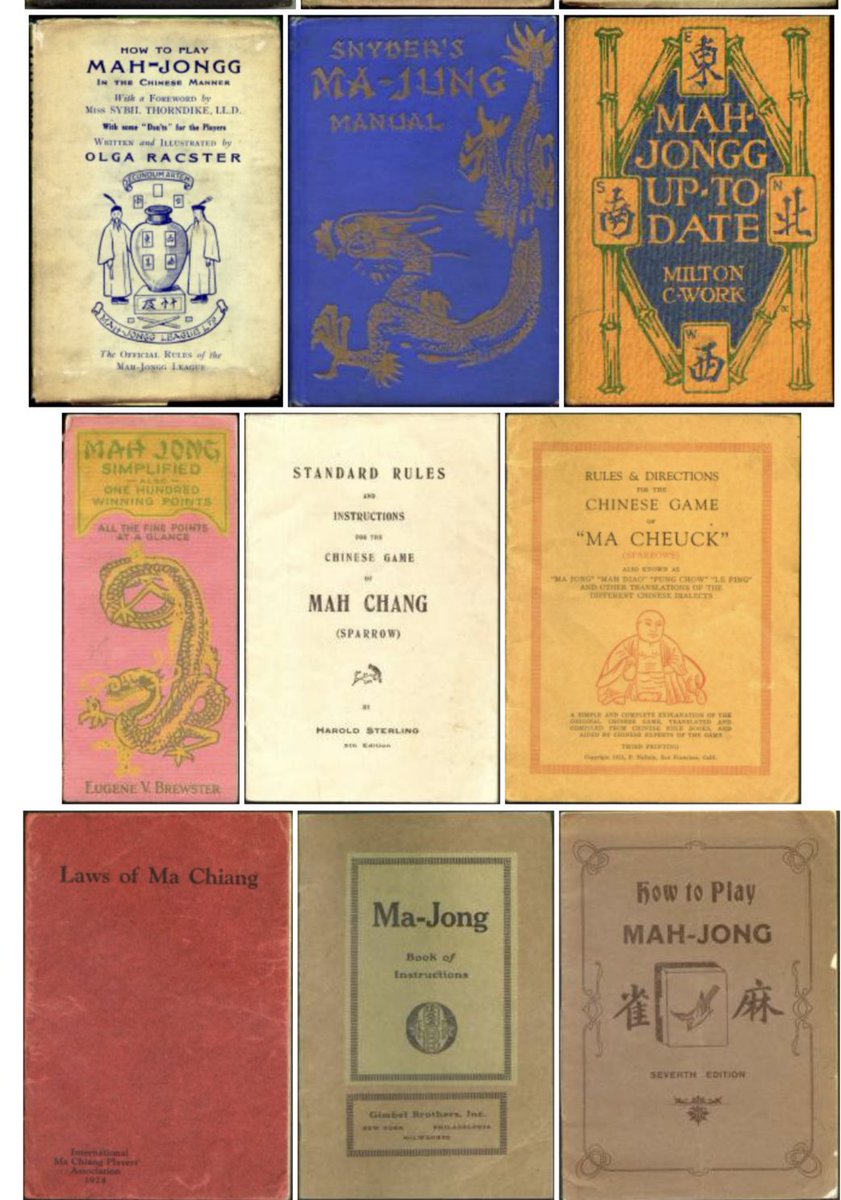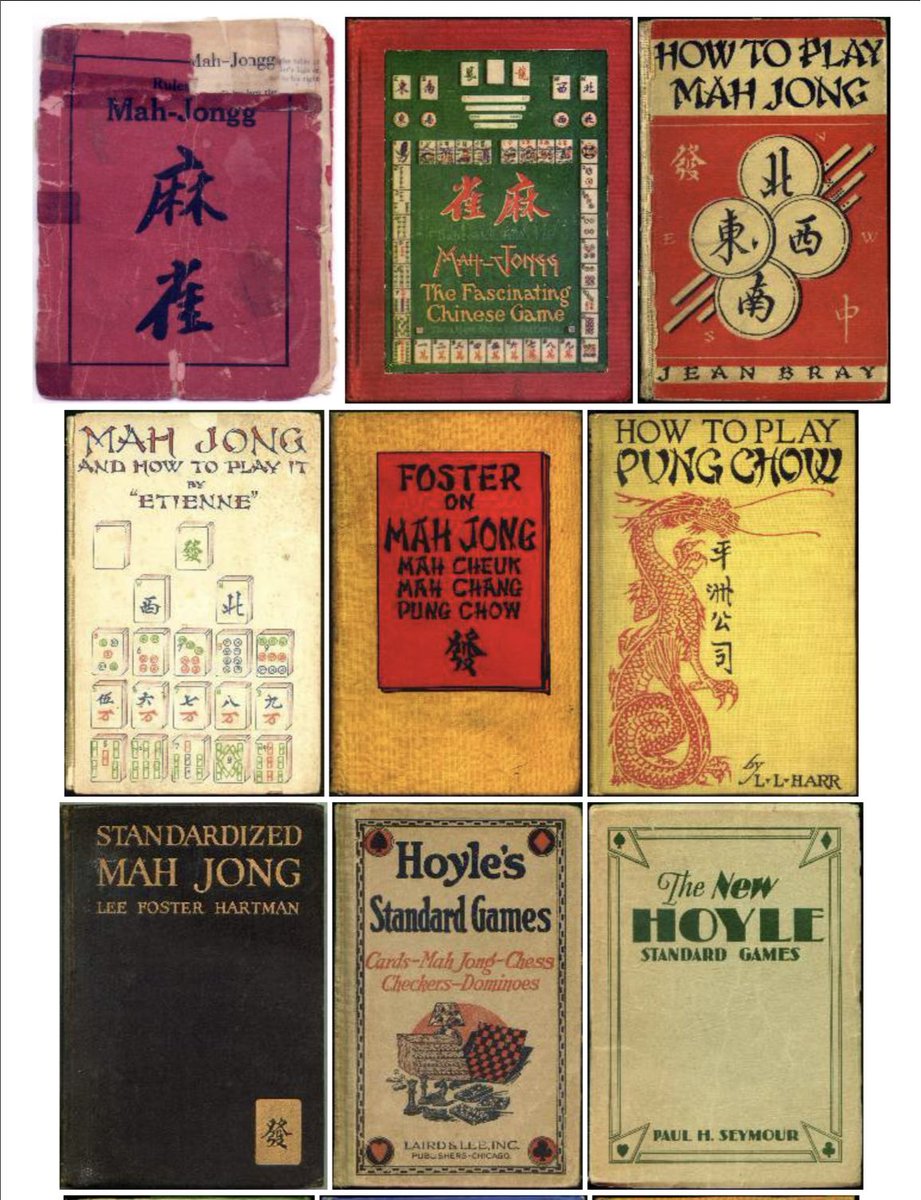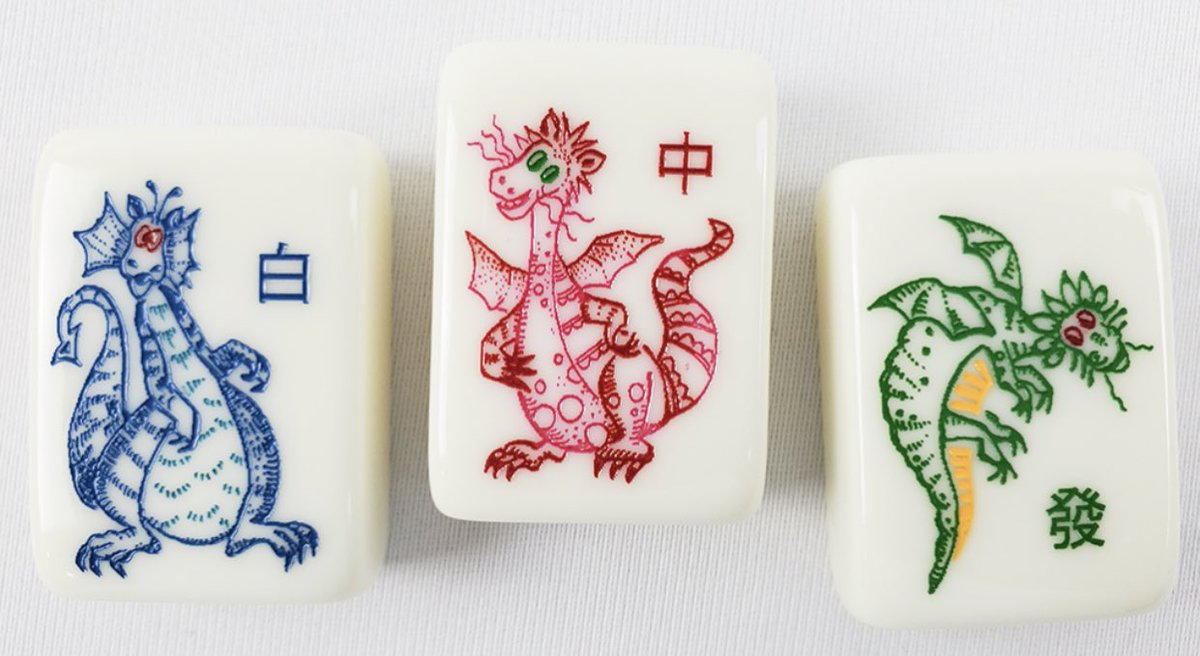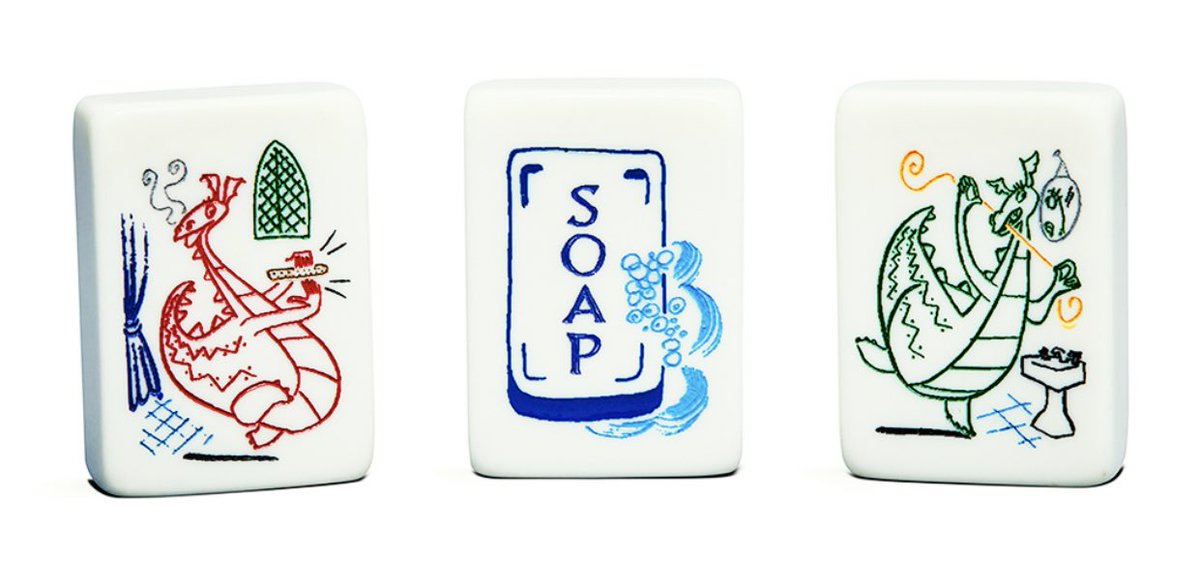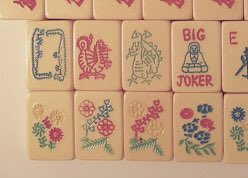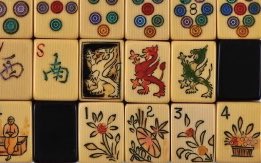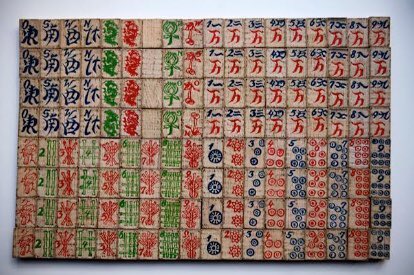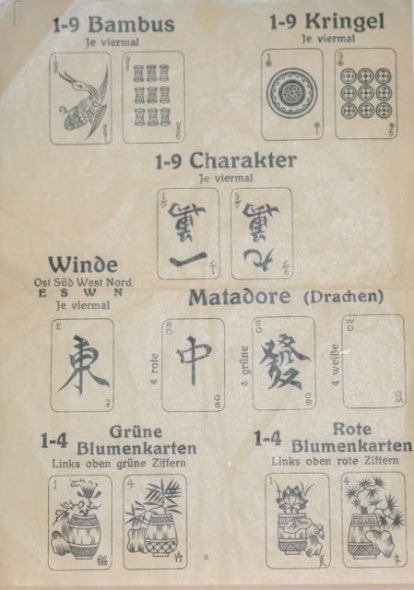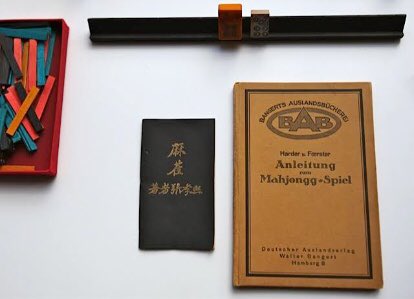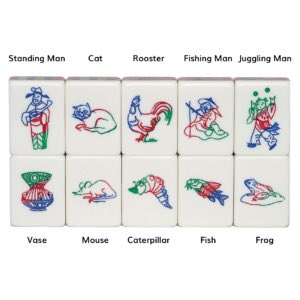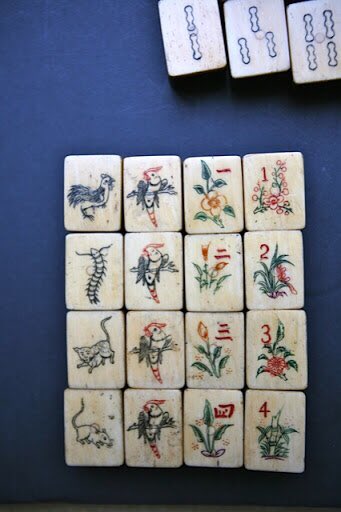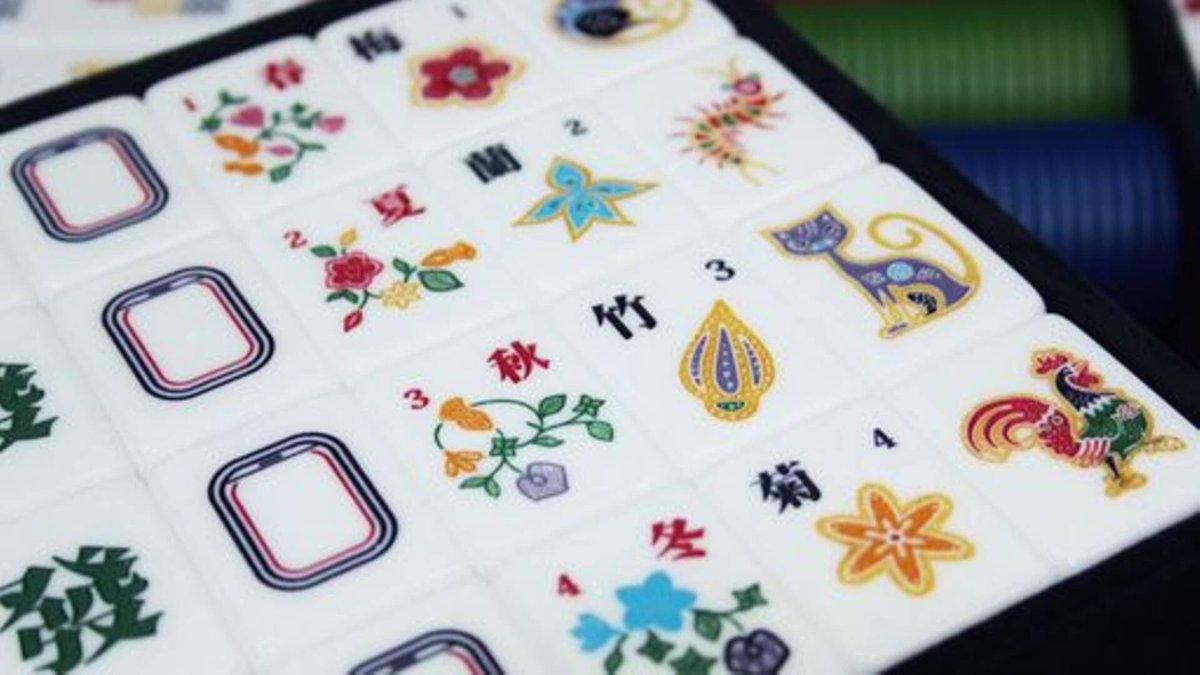This started with my being aesthetically offended by these tiles and their maker's "not your grandma's mahjong" attitude.
But what's more interesting is the rabbit hole I fell down about mahjong's popularity in America since the 1920s, especially among Jewish women.
But what's more interesting is the rabbit hole I fell down about mahjong's popularity in America since the 1920s, especially among Jewish women.
There's this exhibition on mahjong in the Museum of Jewish Heritage.
I suppose it's always interesting for me to see these intersections of history and culture.
https://jewishmuseummd.org/events/project-mah-jongg/
I suppose it's always interesting for me to see these intersections of history and culture.
https://jewishmuseummd.org/events/project-mah-jongg/
Also fascinating to me is how few Chinese faces and names there are in the ephemera, how despite this being a great intersection of culture it is not one of people.
I also note that the rules have diverged completely.
(Photos from https://mahjonggandme.com/ )
I also note that the rules have diverged completely.
(Photos from https://mahjonggandme.com/ )
The rules have diverged so much that the mahjong blog I quoted in the last tweet had a post linking to an explanation of the mahjong scene in Crazy Rich Asians. Because they are used to such different rules.
I also found more kitschy American tiles.
Learning that the 萬 set is called "characters", but "crack" for short... cue firework/lightning puns.
American sets also have Jokers, which I found surprising. Apparently vintage sets can be dated on how many jokers come with the set.
Learning that the 萬 set is called "characters", but "crack" for short... cue firework/lightning puns.
American sets also have Jokers, which I found surprising. Apparently vintage sets can be dated on how many jokers come with the set.
Because the big difference btwn American made tile sets and East Asian ones appear to be the presence of jokers, there seems to be a notable market for joker decals to stick onto the blank tiles that East Asian sets come with.
Apparently the first Mahjong sets sold in the U.S. were sold by Abercrombie & Fitch starting in 1920.
"The company’s co-owner, Ezra Fitch, sent buyers to remote Chinese villages to buy up every mahjong game they could find to send back to Abercrombie & Fitch."
"The company’s co-owner, Ezra Fitch, sent buyers to remote Chinese villages to buy up every mahjong game they could find to send back to Abercrombie & Fitch."
I'm also absolutely in love with all of these dorky birds, showing the sheer variety of bird tiles in vintage sets.
I'm also oddly fascinated by how many of these birds are just not magpies.
I'm also oddly fascinated by how many of these birds are just not magpies.
Speaking of mahjong being popular in the Jewish American community, I also stumbled on the subgenre of mahjong Hanukkah menorahs.
I'm also struck by how varied the designs are. I grew up in an extended family that took mahjong very seriously and to me mahjong sets are very standardised. It's exciting and strange to see the variety.
From: https://www.vpr.org/post/little-tiles-big-happiness-brief-history-mah-jongg
From: https://www.vpr.org/post/little-tiles-big-happiness-brief-history-mah-jongg
I can't help but wonder how much of that variety comes from the voracious hunger of the American market for mahjong tiles leading to sets from localities of China being bought up and sold to them. And how much from a flurry of creativity rushing up to meet that demand.
Also surprising to me is how the flower and season tiles appear to have simply not been standardised yet.
So we have "酒,色,財,氣" (wine, lust, wealth, anger) presumably here as four vices. Four noble ranks. Four scholarly arts (琴棋書畫 chess, zither, book, painting)
So we have "酒,色,財,氣" (wine, lust, wealth, anger) presumably here as four vices. Four noble ranks. Four scholarly arts (琴棋書畫 chess, zither, book, painting)
I found fascinating Dorothy Stern's
"Tiles & Tribulations" talks about the femininity and performance thereof, as well as the spaces we allow for them. How the game fits into ideas and ideals of femininity within the Jewish American community. https://www.lilith.org/articles/tiles-tribulations/
"Tiles & Tribulations" talks about the femininity and performance thereof, as well as the spaces we allow for them. How the game fits into ideas and ideals of femininity within the Jewish American community. https://www.lilith.org/articles/tiles-tribulations/
Also intrigued by this upcoming book on mahjong and it's myriad players in American history https://www.amheinz.org/mahjong-project.html
More photos from the Project Mahjong exhibition, from when it was hosted by Jewish Museum Milwaukee http://www.milwaukeeindependent.com/articles/mah-jongg-honored-in-milwaukee-jewish-museum-exhibit/
Not all historical intersections are pleasant, needless to say. Here's some vintage racism & moral handwringing.
It's notable to me that whilst it's all racist bullshit, it's slightly different bullshit to now. These stereotypes aren't static.
https://chineseamericanhistorian.blogspot.com/2019/10/mah-jongg-mania.html?m=1
It's notable to me that whilst it's all racist bullshit, it's slightly different bullshit to now. These stereotypes aren't static.
https://chineseamericanhistorian.blogspot.com/2019/10/mah-jongg-mania.html?m=1
I was all ready to mock American players needing to have score cards and not relying on the one player who just remembers.
But then I realised, oh yeah, my aunt used to make and distribute laminated charts of her hybrid HK-Taiwan style scoring system too.
But then I realised, oh yeah, my aunt used to make and distribute laminated charts of her hybrid HK-Taiwan style scoring system too.
A running theme in the articles above is how mahjong brings us together, but I also wonder at the divergences. If the differences of etiquette & rules would make it challenging to play together. I half recall my mother teasing my aunt about her white mahjong-playing friends.
Also, found this somewhat chaotically arranged but very informative site with just the most beautiful old mahjong sets.
Unapologetically political sets here, with "institute the opium ban" and "revolution" on the bold character tiles.
https://www.themahjongtileset.co.uk/tile-set-galleries/tile-set-diversity-1-0/
Unapologetically political sets here, with "institute the opium ban" and "revolution" on the bold character tiles.
https://www.themahjongtileset.co.uk/tile-set-galleries/tile-set-diversity-1-0/
Possibly as continuation of Ming & Qing dynasty practice of drawing outlaws from THE WATER MARGIN on the 万 (myriads/characters) suit, there are mahjong sets with the roster of marshy outlaws.
Cannot get over how incredibly racist some of lyrics of those songs celebratory of mahjong are in the 20s.
Another reminder that people can love your culture without you.
https://ladailymirror.com/2015/08/10/mary-mallory-hollywood-heights-since-ma-is-playing-mah-jongg-1920s-game-craze/amp/
Another reminder that people can love your culture without you.
https://ladailymirror.com/2015/08/10/mary-mallory-hollywood-heights-since-ma-is-playing-mah-jongg-1920s-game-craze/amp/
I'll probably need to dig deeper but this article skims a little of mahjong's history in mainland China where it was banned alongside gambling until 1985 and it's more recent revival.
https://www.theworldofchinese.com/2019/11/tales-of-the-tile/
https://www.theworldofchinese.com/2019/11/tales-of-the-tile/
Also! Also! Also!
Some flower tiles of MULAN JOINS THE ARMY! 木蘭從軍!
(Less interesting to me personally, the second row is 麻姑 Hemp Maiden/Pock-Marked Crone presenting longevity peaches, btw.)
https://www.themahjongtileset.co.uk/allan-and-lila-weitz-private-collection-24/
Some flower tiles of MULAN JOINS THE ARMY! 木蘭從軍!
(Less interesting to me personally, the second row is 麻姑 Hemp Maiden/Pock-Marked Crone presenting longevity peaches, btw.)
https://www.themahjongtileset.co.uk/allan-and-lila-weitz-private-collection-24/
Am also noticing how a lot of these vintage sets obviously had their numbers modified on after the fact. Presumably at the point of being imported and sold to outside of the Asia? https://www.themahjongtileset.co.uk/allan-and-lila-weitz-private-collection-21/
Just how political these designs get fascinate me. Maybe it's just I'm so used to them being uniform.
This Singaporean set from 30s contains more than a few references to the war against Japan. Including Sun Yat Sen's "Aviation Saves the Nation"
http://www.mahjongtreasures.com/2016/10/16/singapore-in-the-1930s/
This Singaporean set from 30s contains more than a few references to the war against Japan. Including Sun Yat Sen's "Aviation Saves the Nation"
http://www.mahjongtreasures.com/2016/10/16/singapore-in-the-1930s/
OMG 梅蘭芳's own customised mahjong set!
Instead of winds we have 遊龍戲鳳, title of an opera but also about himself, a wandering dragon who acts the part of phoenixes, as well as 名伶表演, 古今趣史 for flowers, declaring famous actors, historic plays. http://www.mahjongtreasures.com/2016/07/11/chinese-opera-star-mei-lanfangs-mahjong-set/
Instead of winds we have 遊龍戲鳳, title of an opera but also about himself, a wandering dragon who acts the part of phoenixes, as well as 名伶表演, 古今趣史 for flowers, declaring famous actors, historic plays. http://www.mahjongtreasures.com/2016/07/11/chinese-opera-star-mei-lanfangs-mahjong-set/
Coming full circle as the ouroboros consumes itself, as I am tweeting about Mei Lanfang again https://twitter.com/jeannette_ng/status/1262300971679600641
Last random vintage set of mahjong catching my eye! But this set declaring both for liberated women and celebrating actress Wu Yin.
This website has quite a few of those 1920s mahjong handbooks digitised! Which is pretty intriguing to me.
Lots of interesting stuff from this article but I am still marvelling at the idea of a BALLET about mahjong!
"... photographs, rulebooks and even a ballet starring a Vanderbilt daughter..." https://news.stanford.edu/news/2013/july/humanities-mahjong-history-071513.html
"... photographs, rulebooks and even a ballet starring a Vanderbilt daughter..." https://news.stanford.edu/news/2013/july/humanities-mahjong-history-071513.html
I'm also low key fascinated by these very non-Asian looking dragons showing up on these American made mahjong sets.
I only know these tiles as 紅中 發財, so them being dragons is all new to me.
It's one of the big early divergences in design, I think.
I only know these tiles as 紅中 發財, so them being dragons is all new to me.
It's one of the big early divergences in design, I think.
There's a lot less about mahjong in Europe immediately accessible online, but they were also swept up in the craze at some point. Here is a glimpse of some vintage sets made in Europe (Germany and England).
http://www.mahjongtreasures.com/2019/05/05/german-delight/#comment-9368
http://www.mahjongtreasures.com/2019/05/05/german-delight/#comment-9368

 Read on Twitter
Read on Twitter